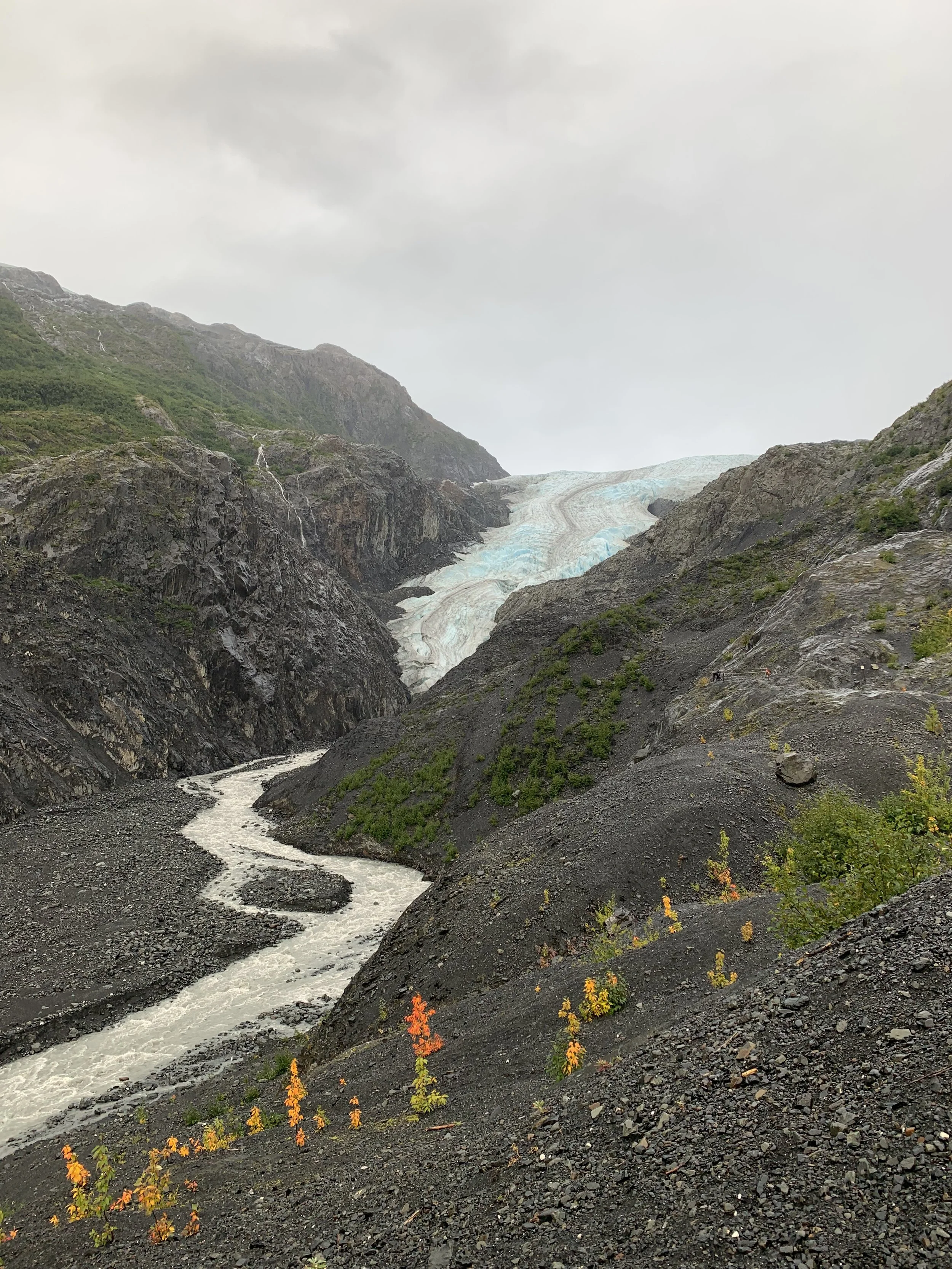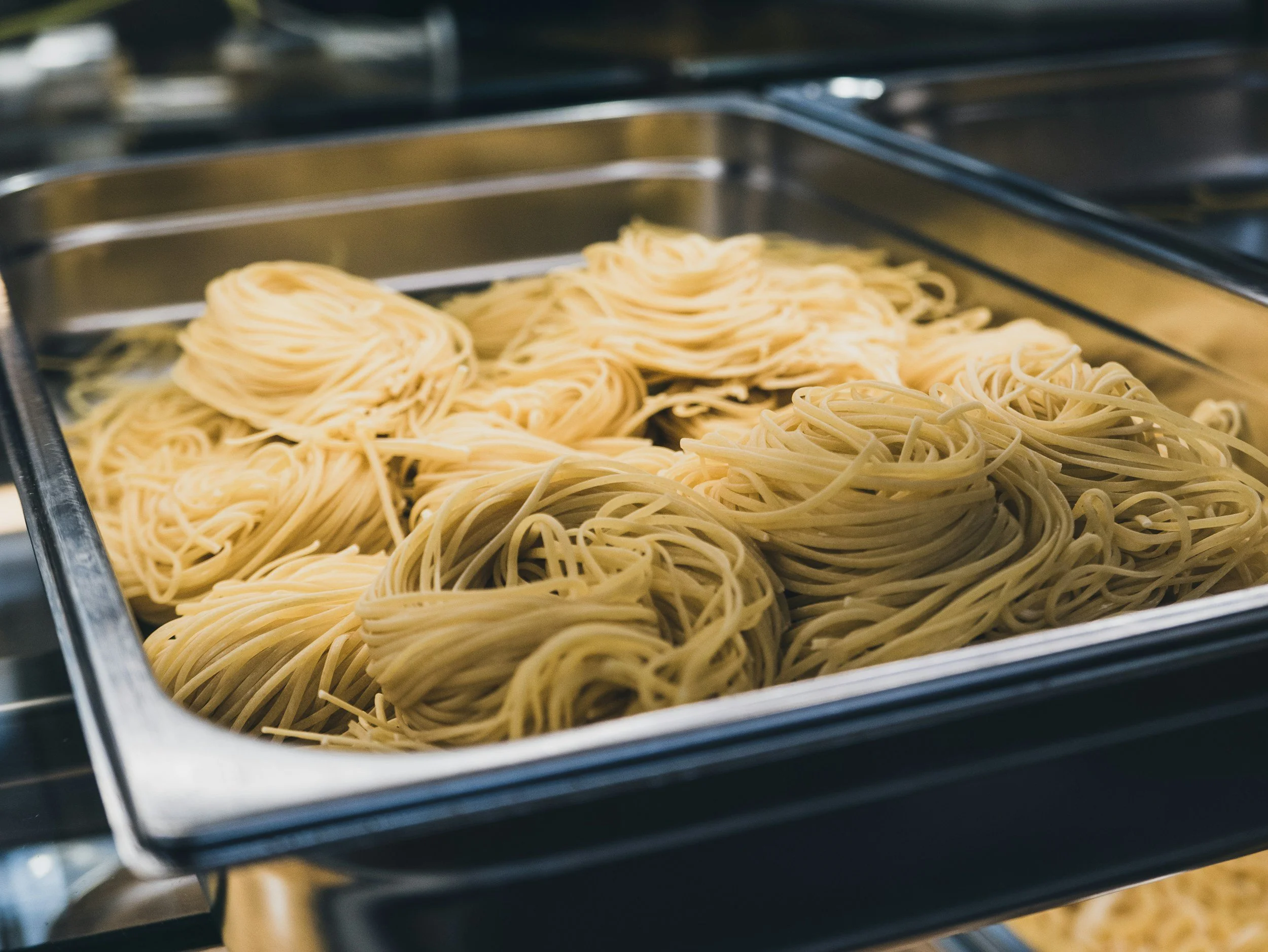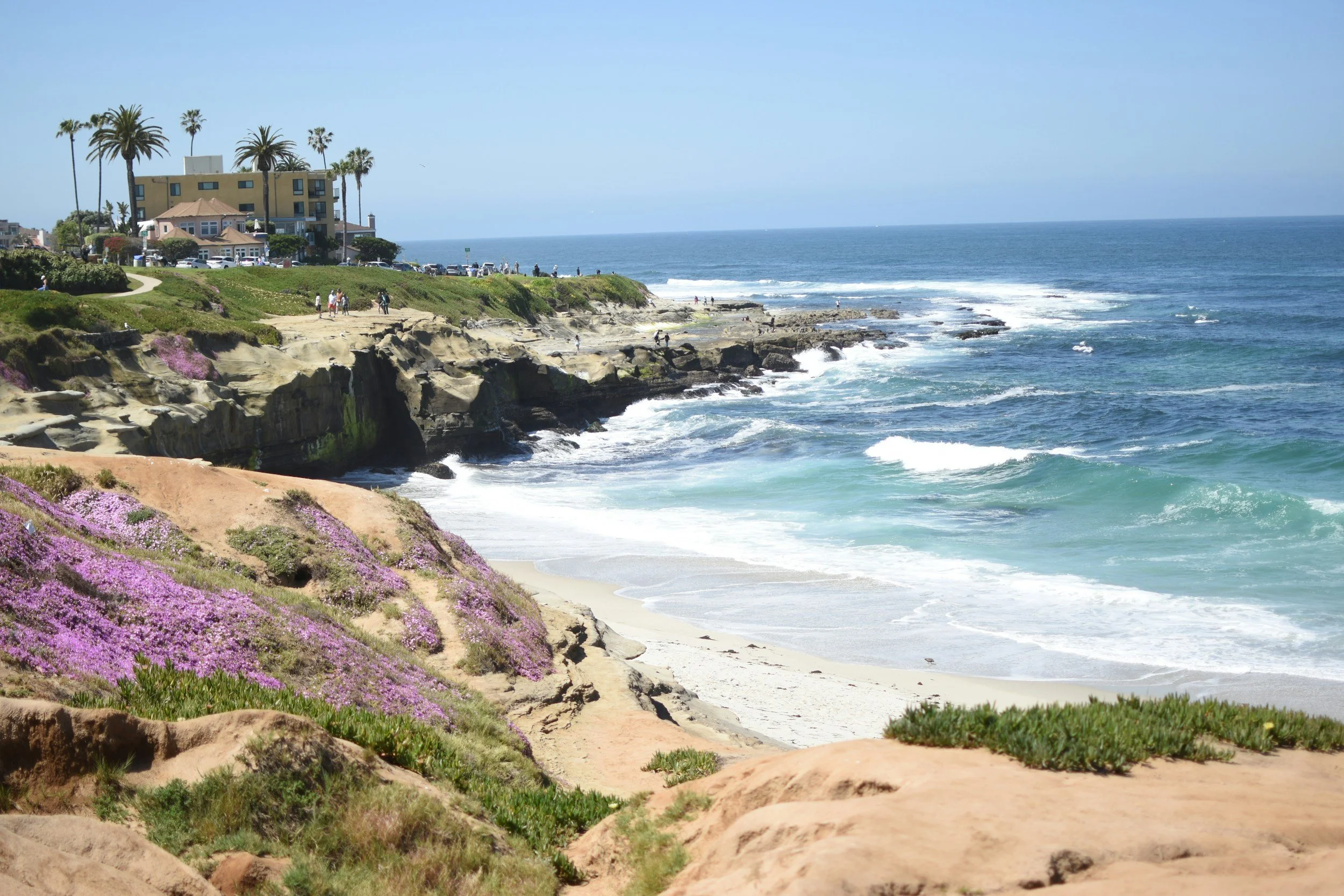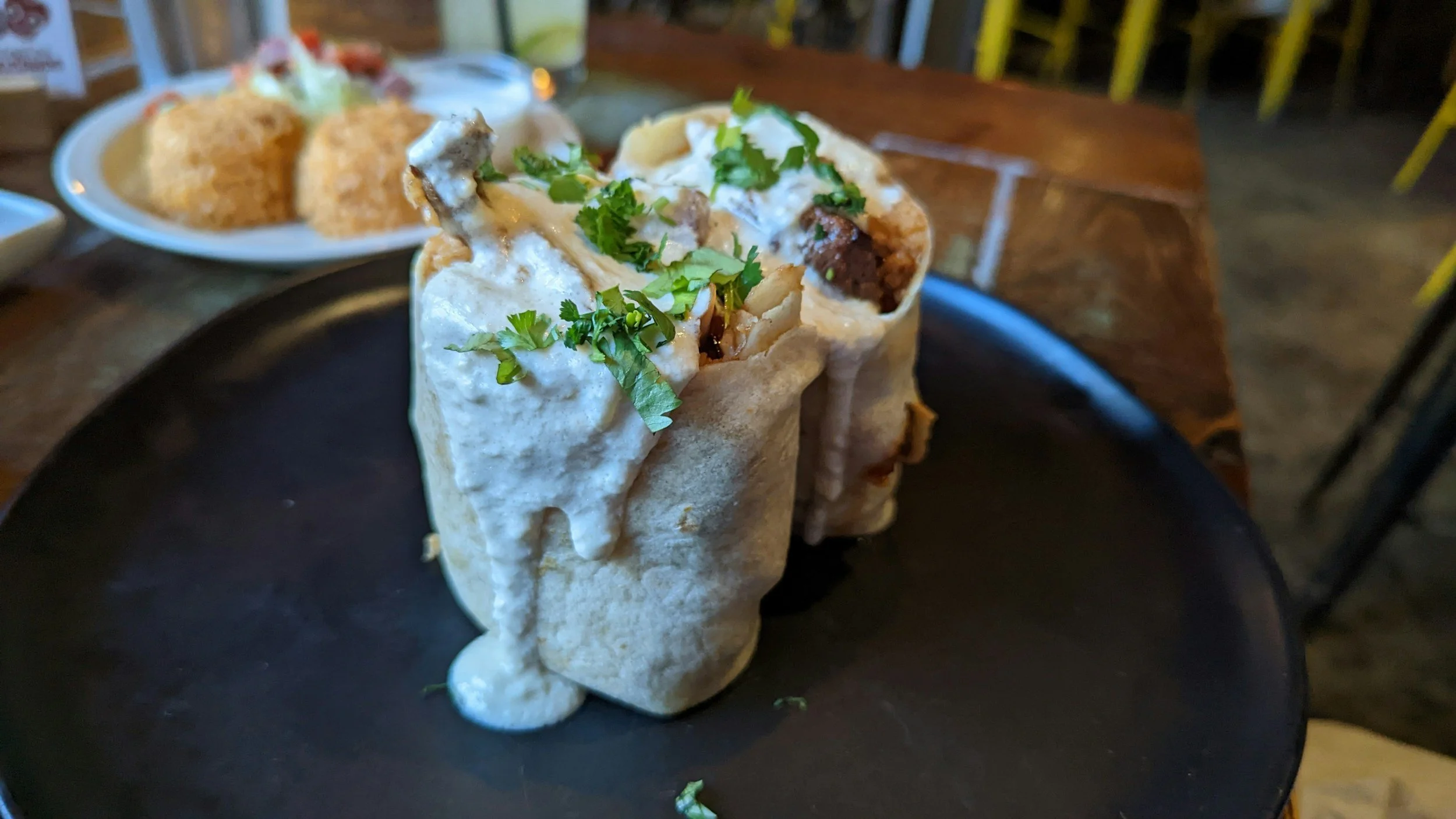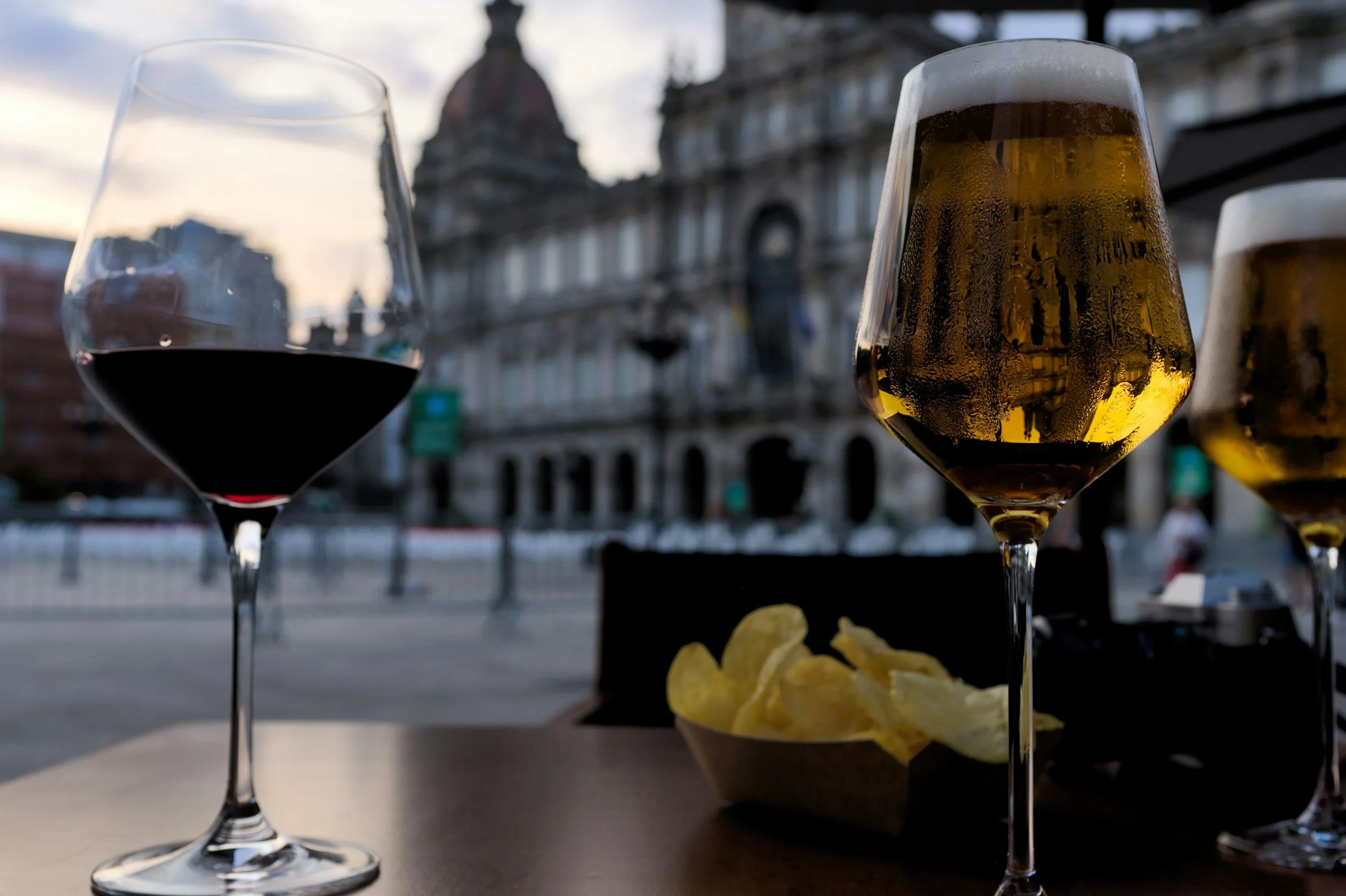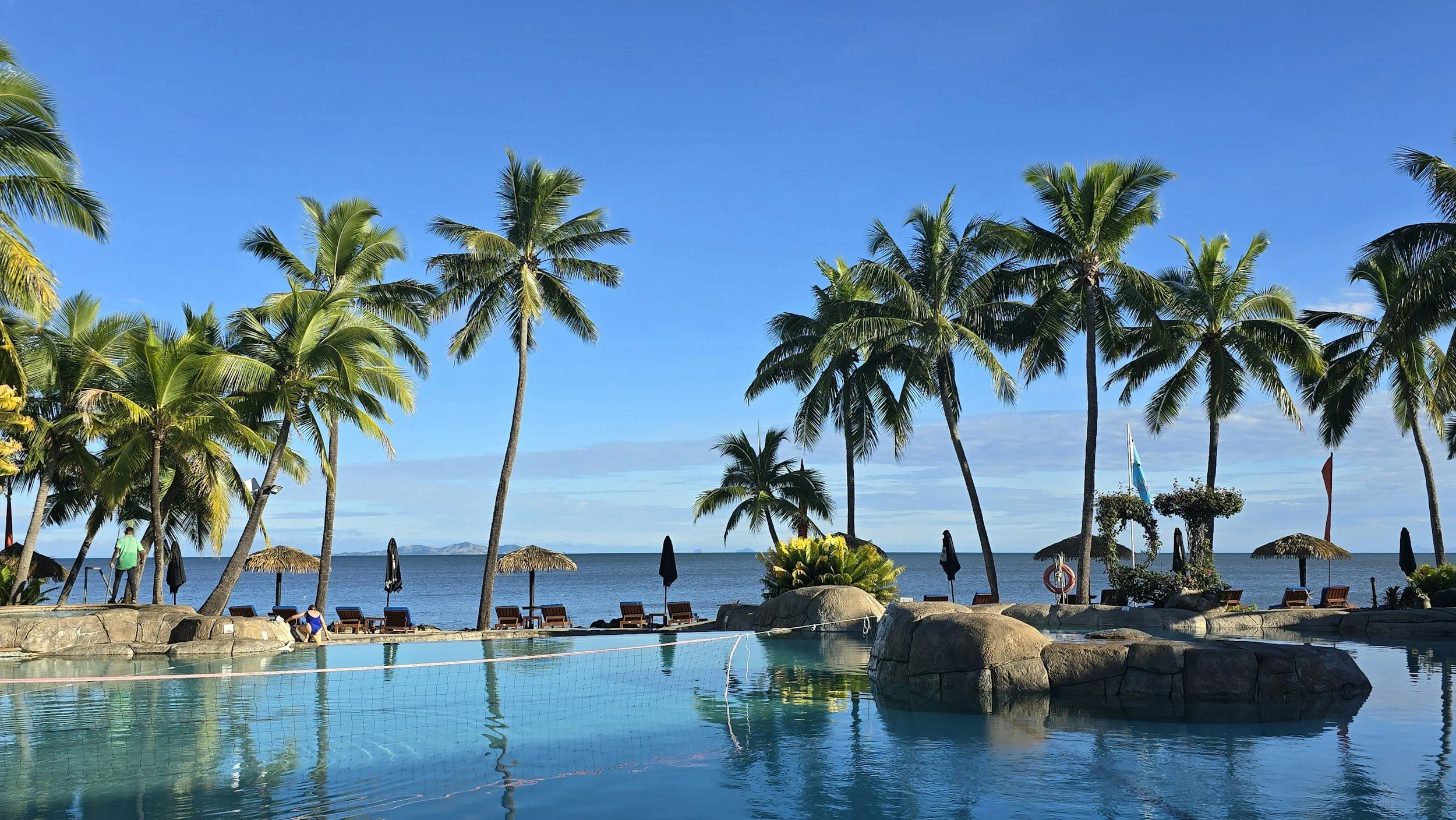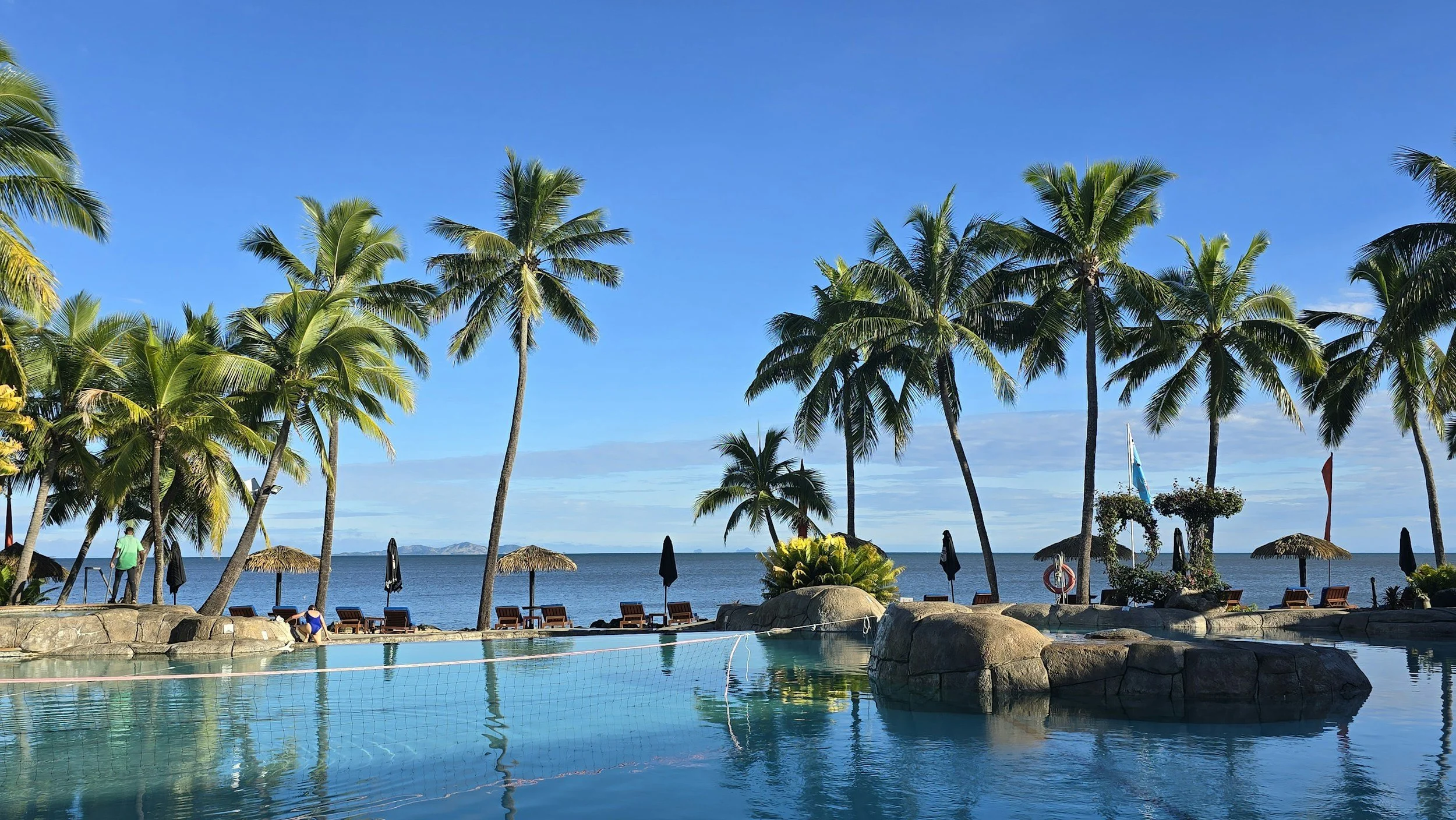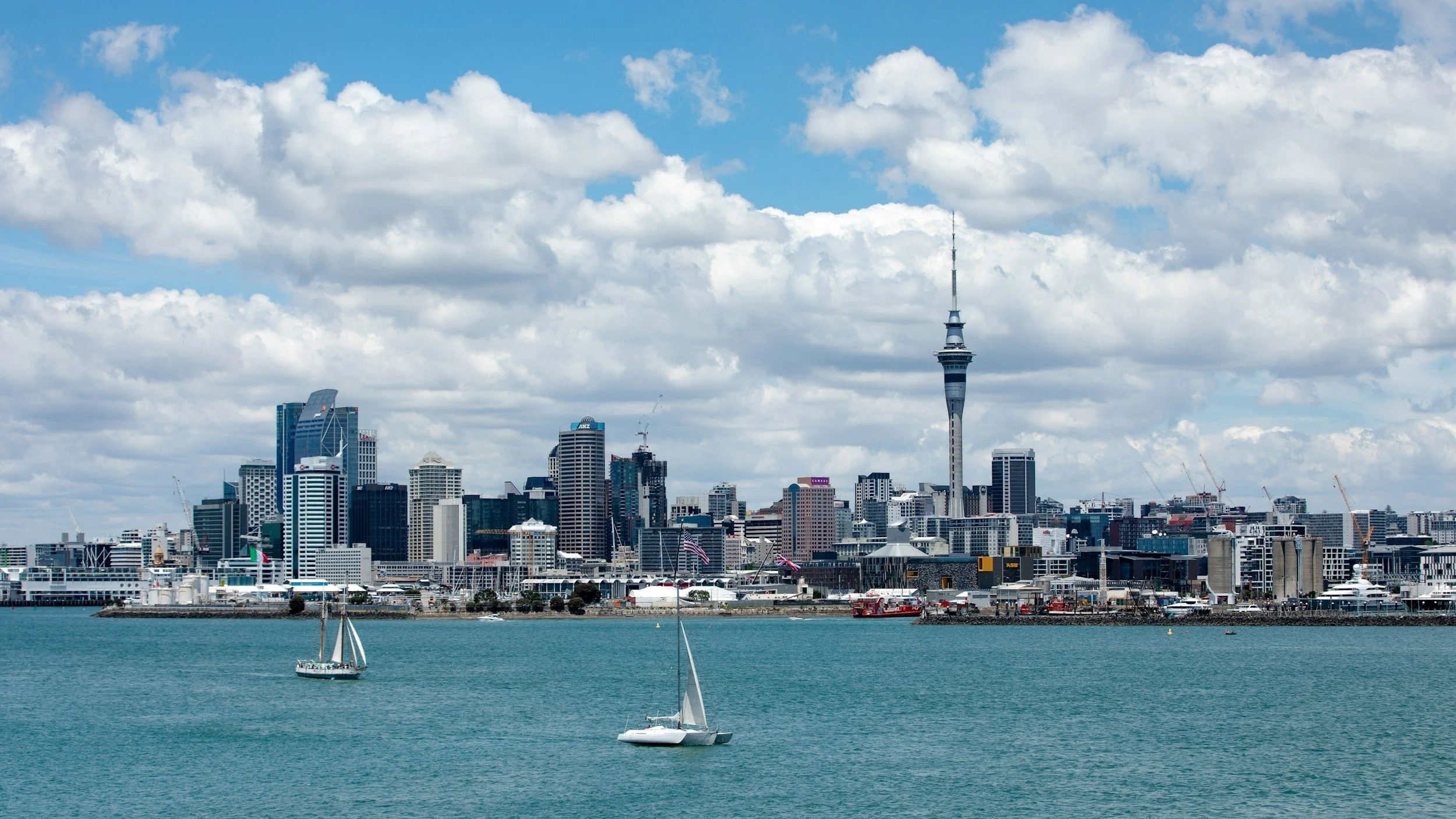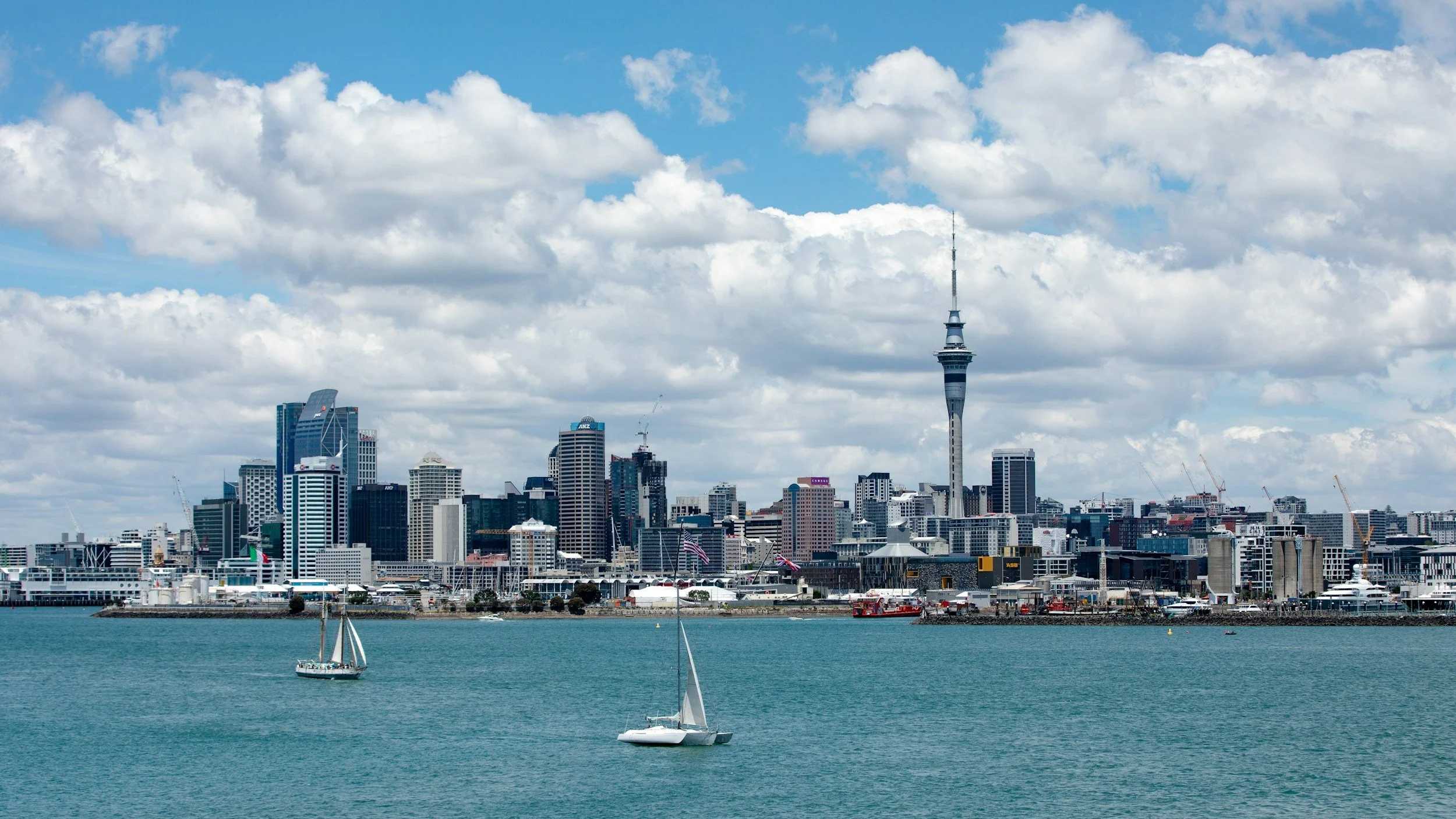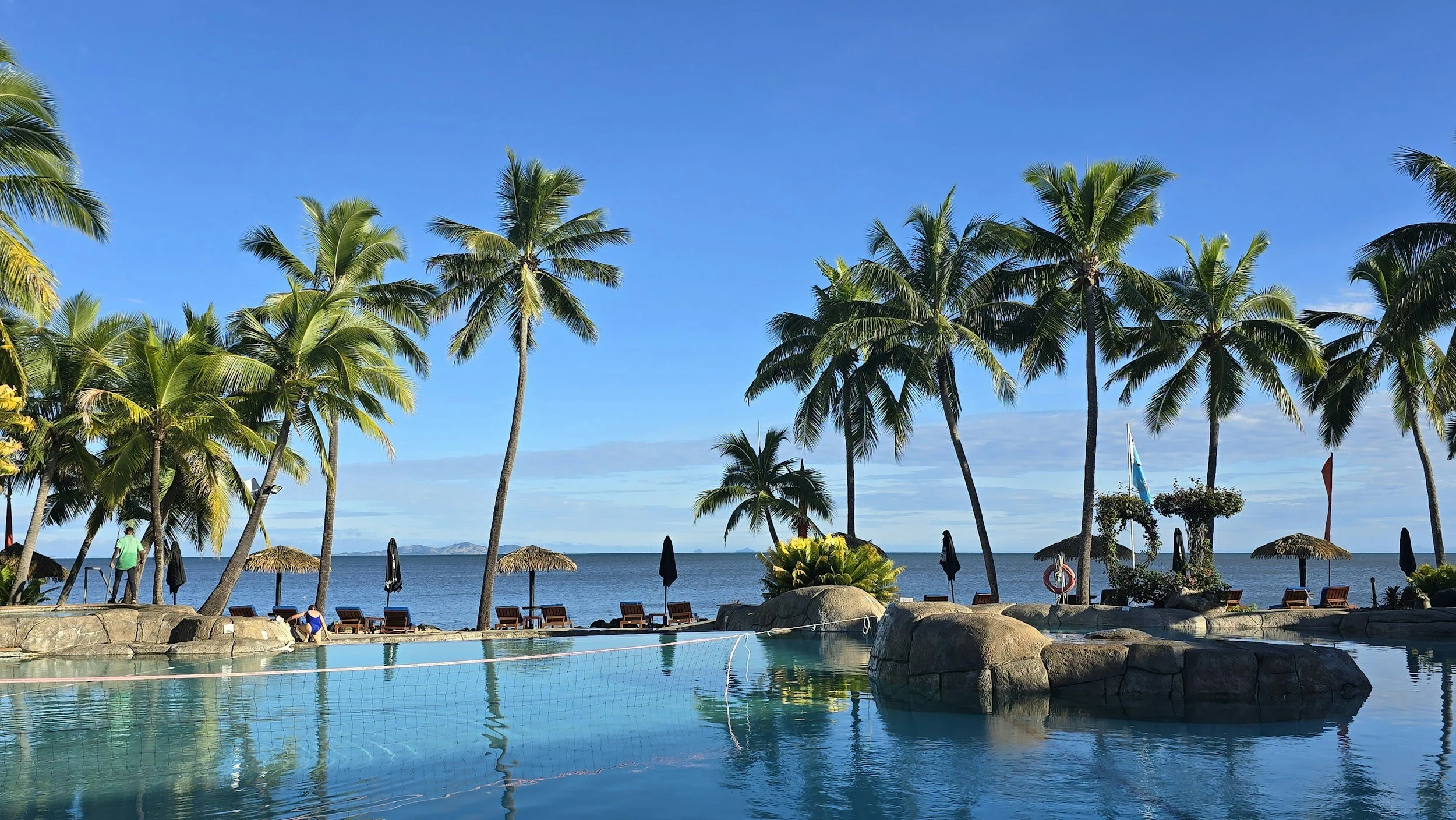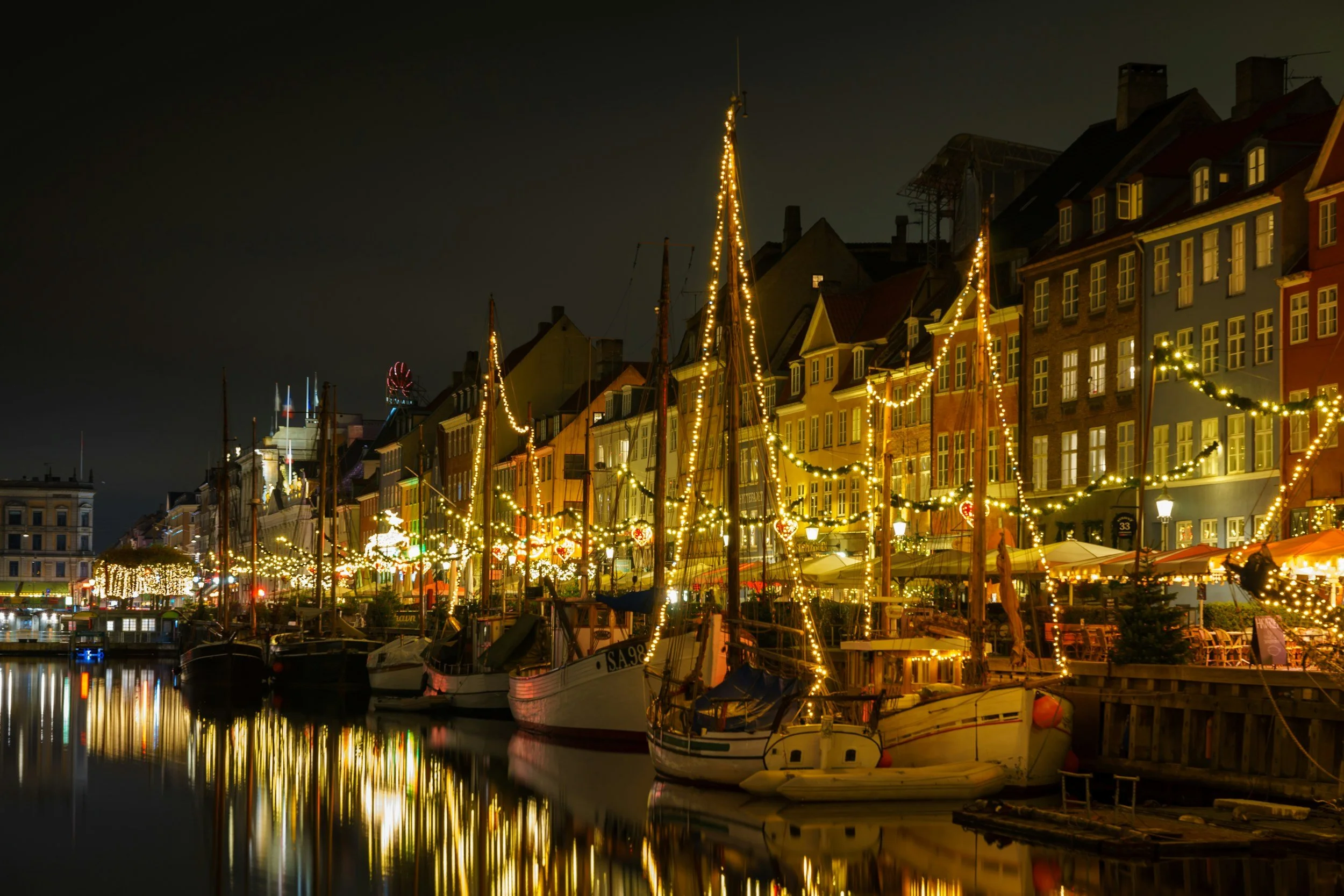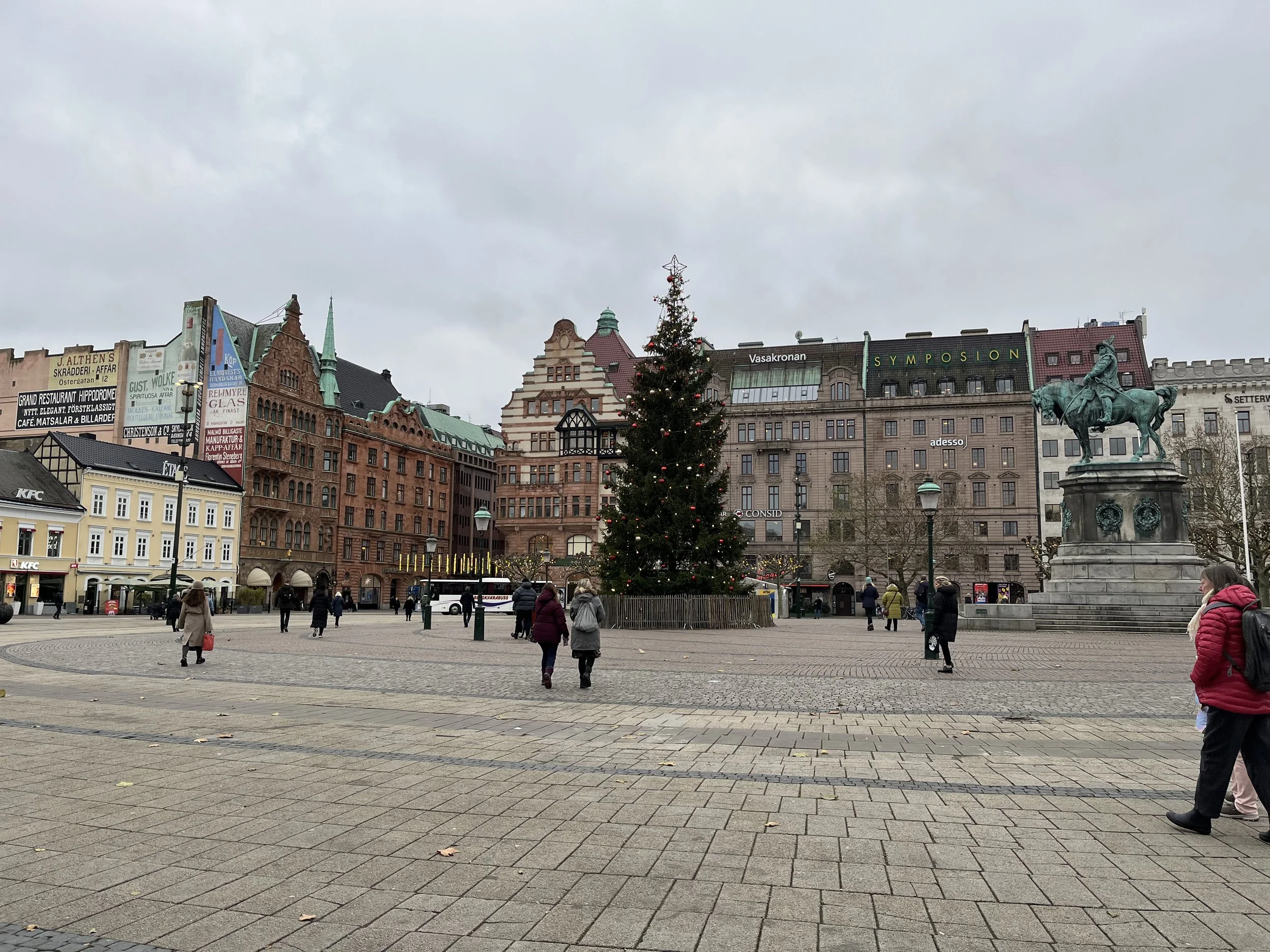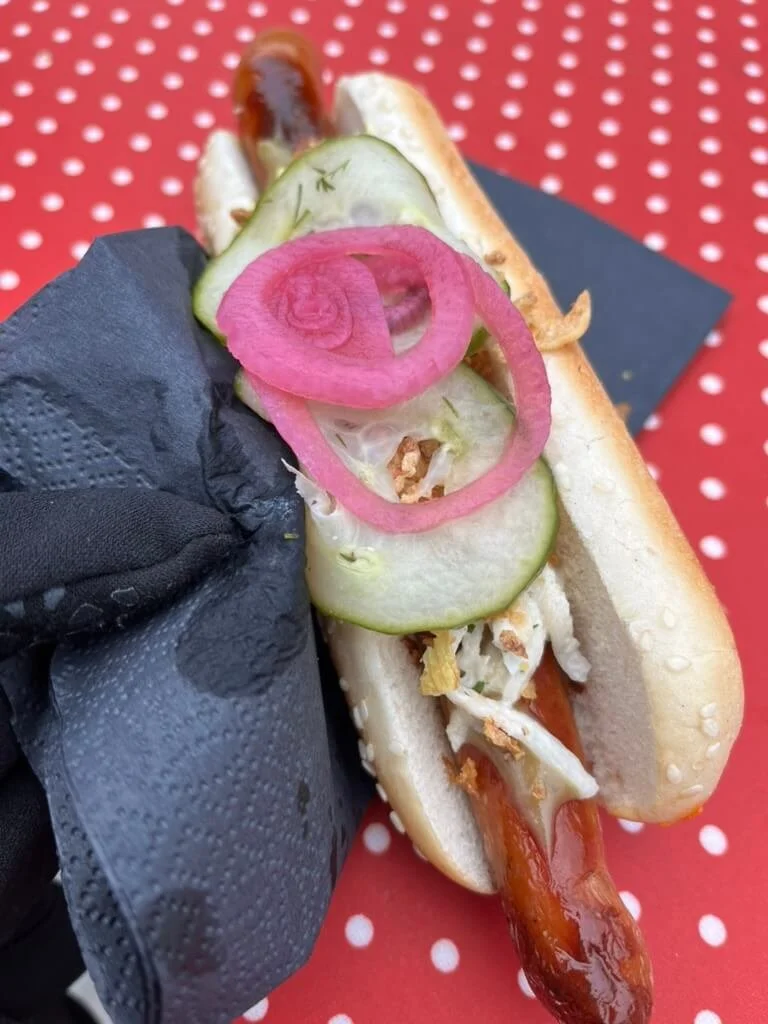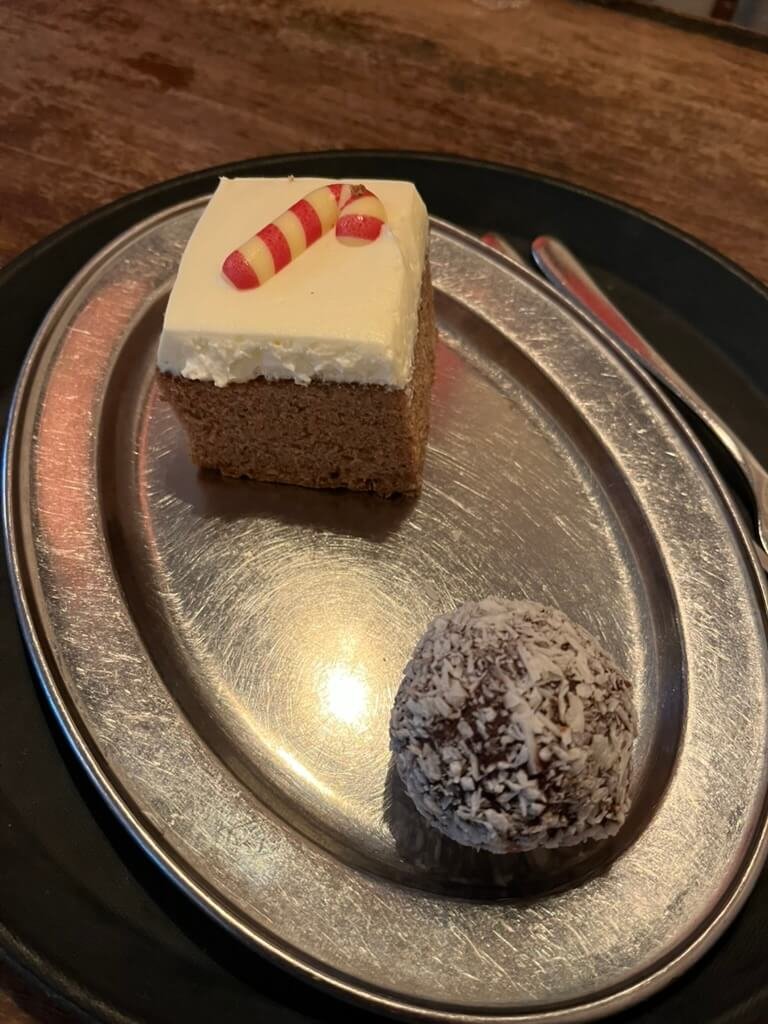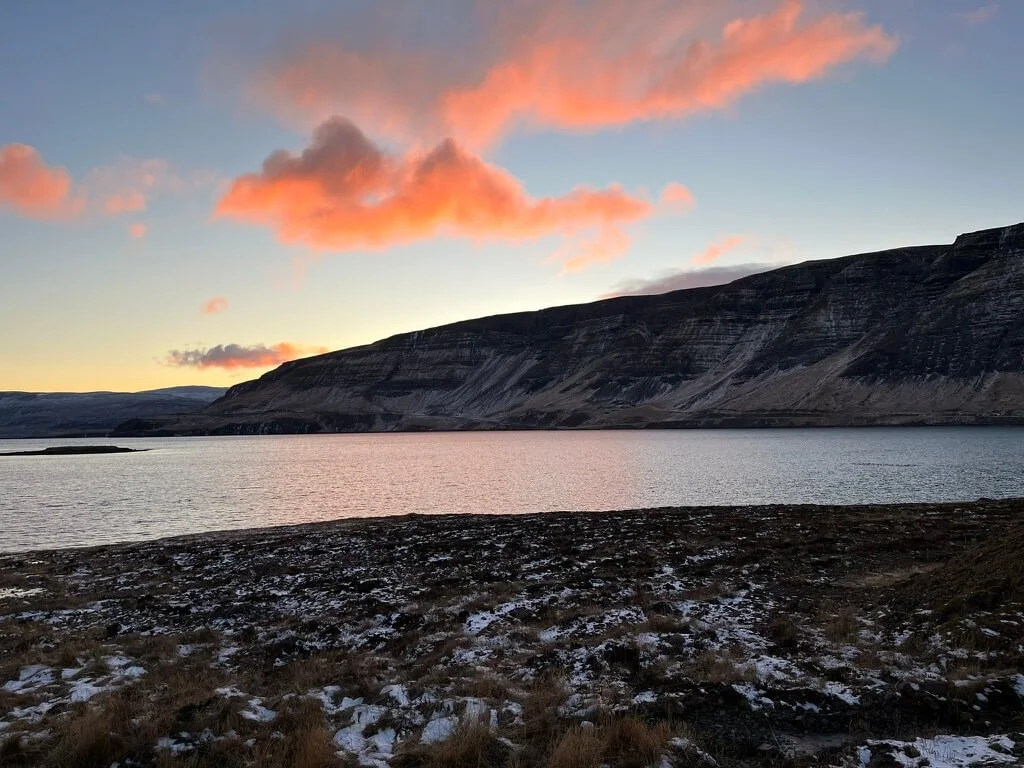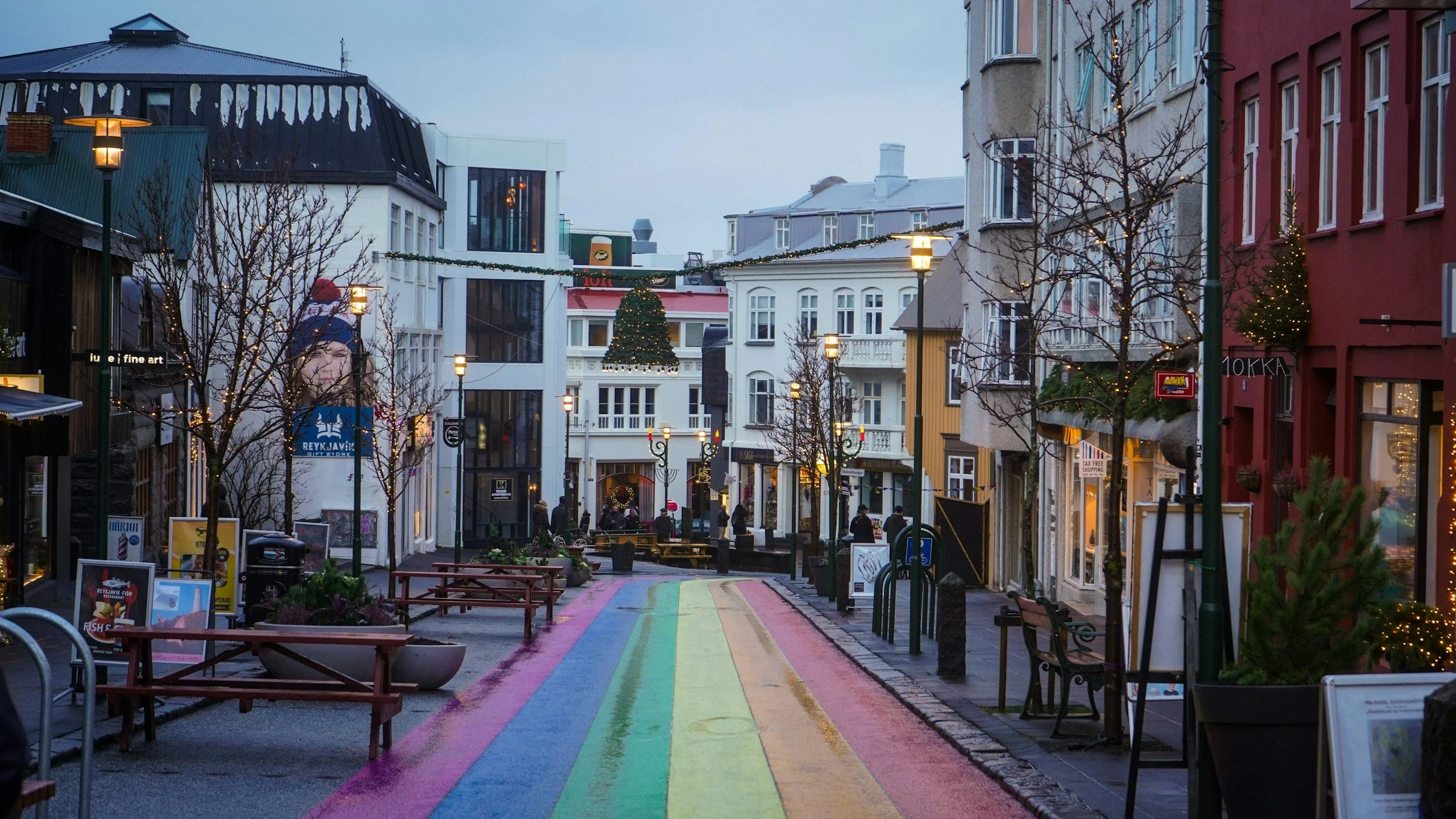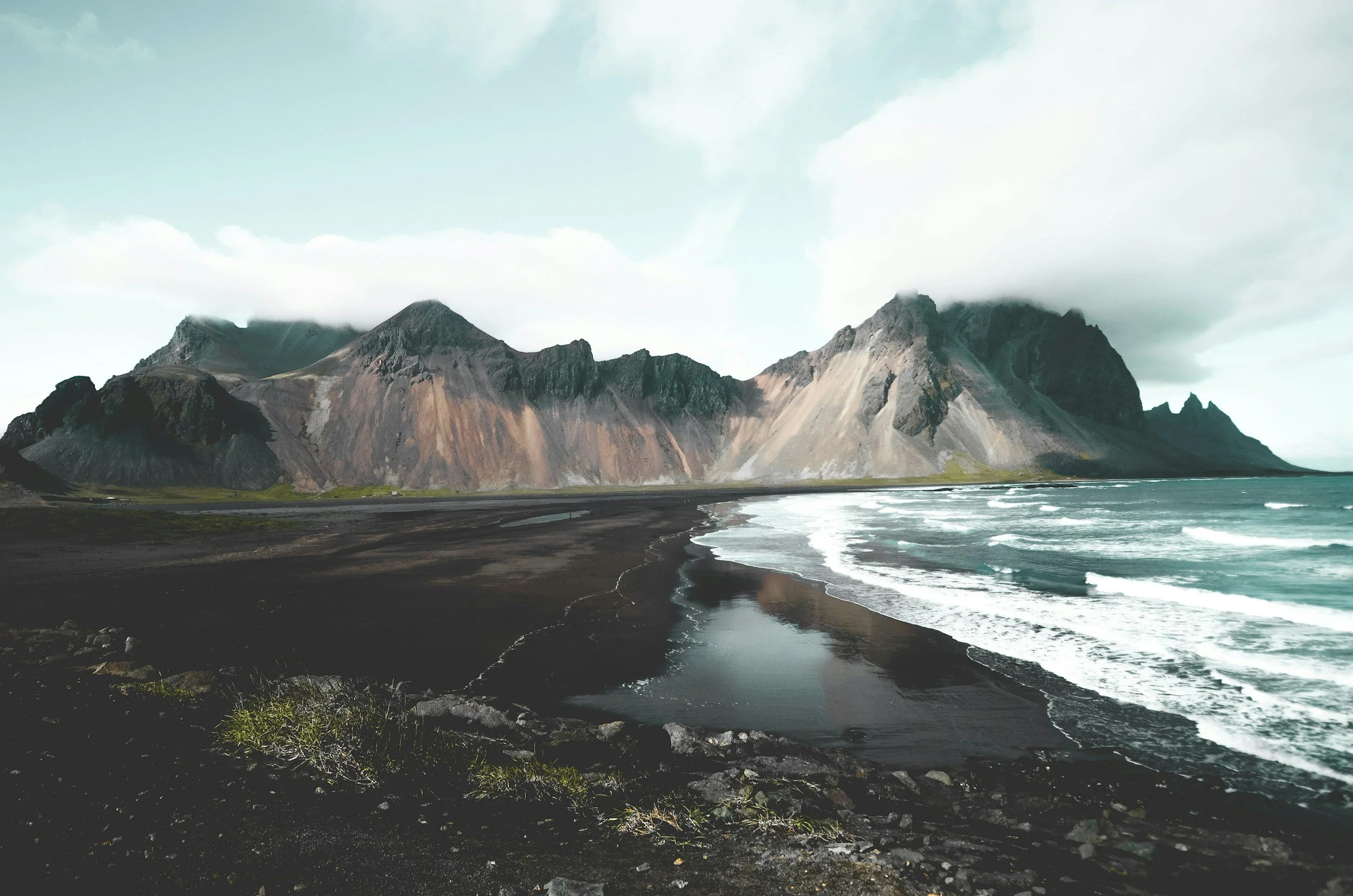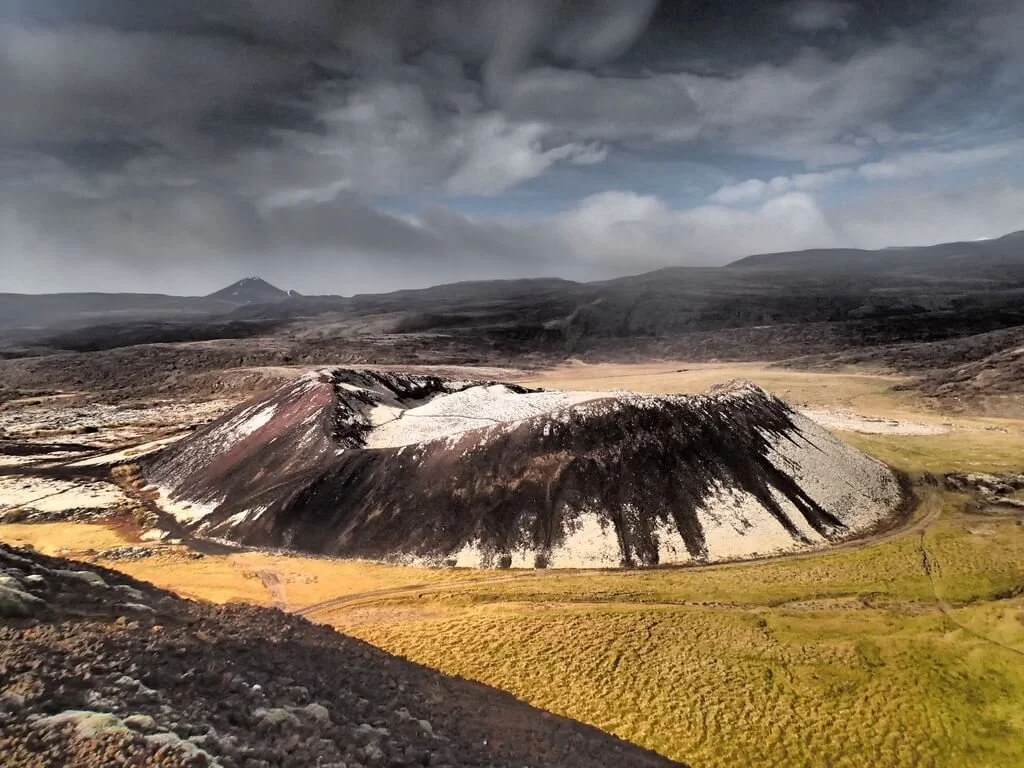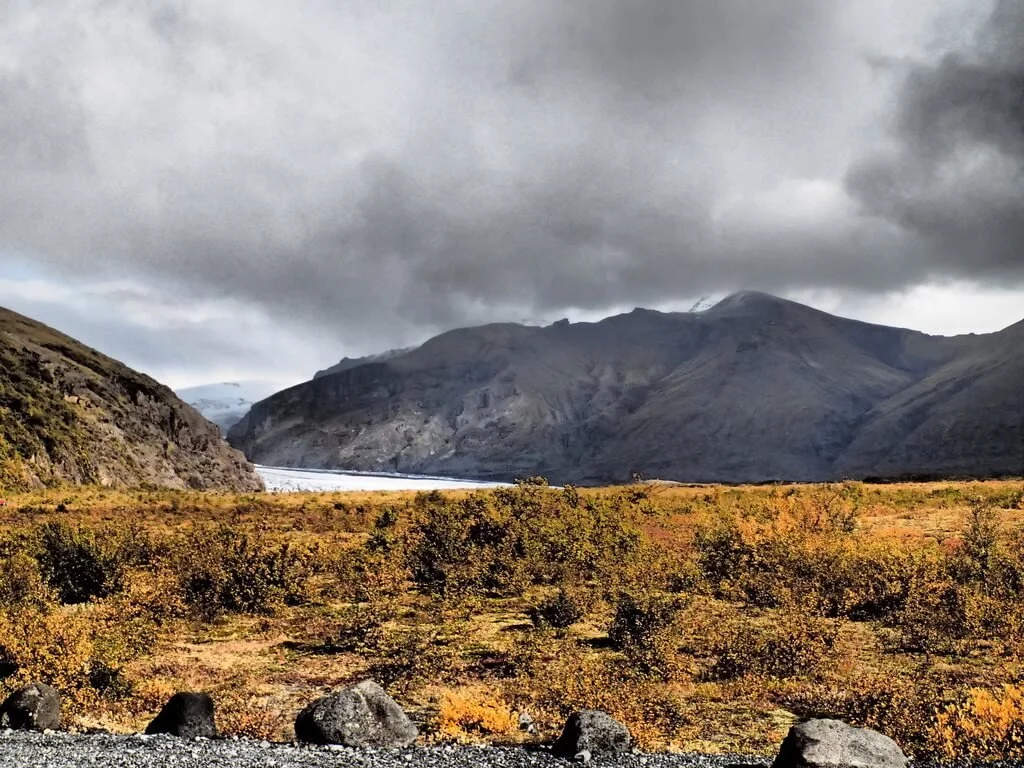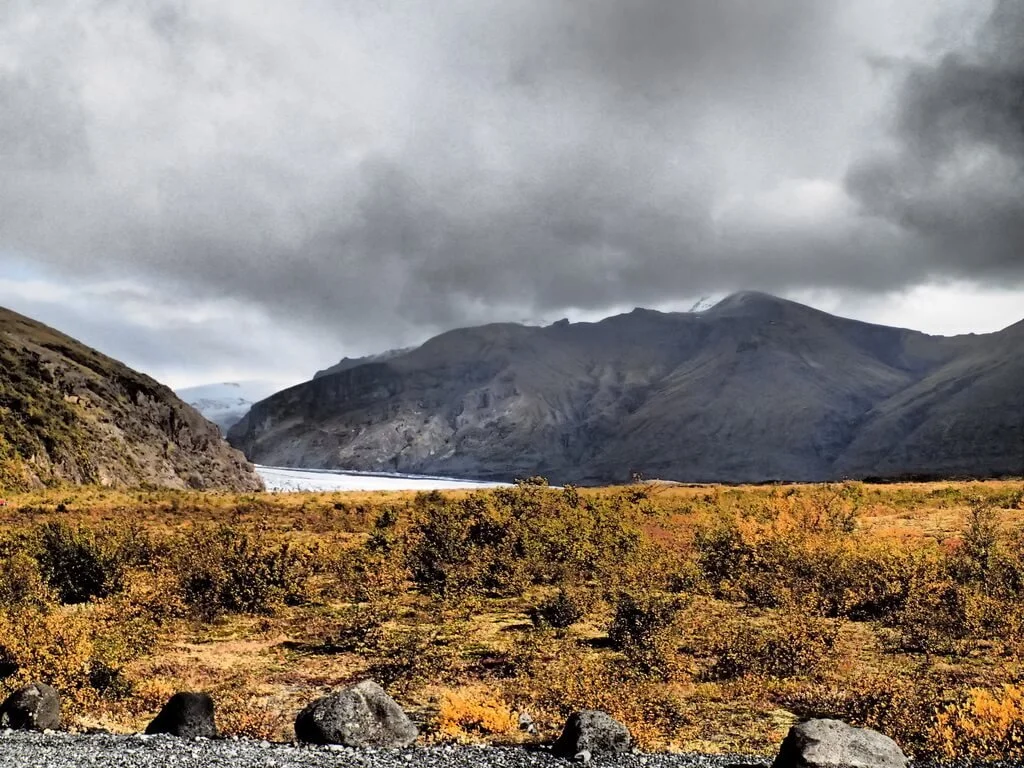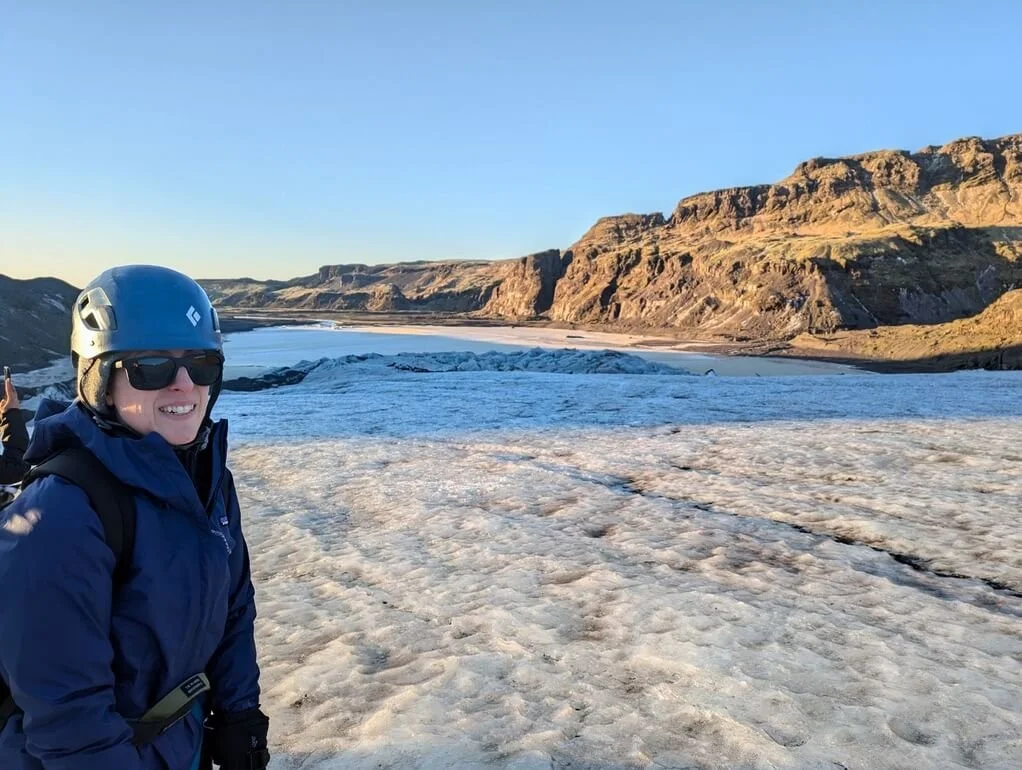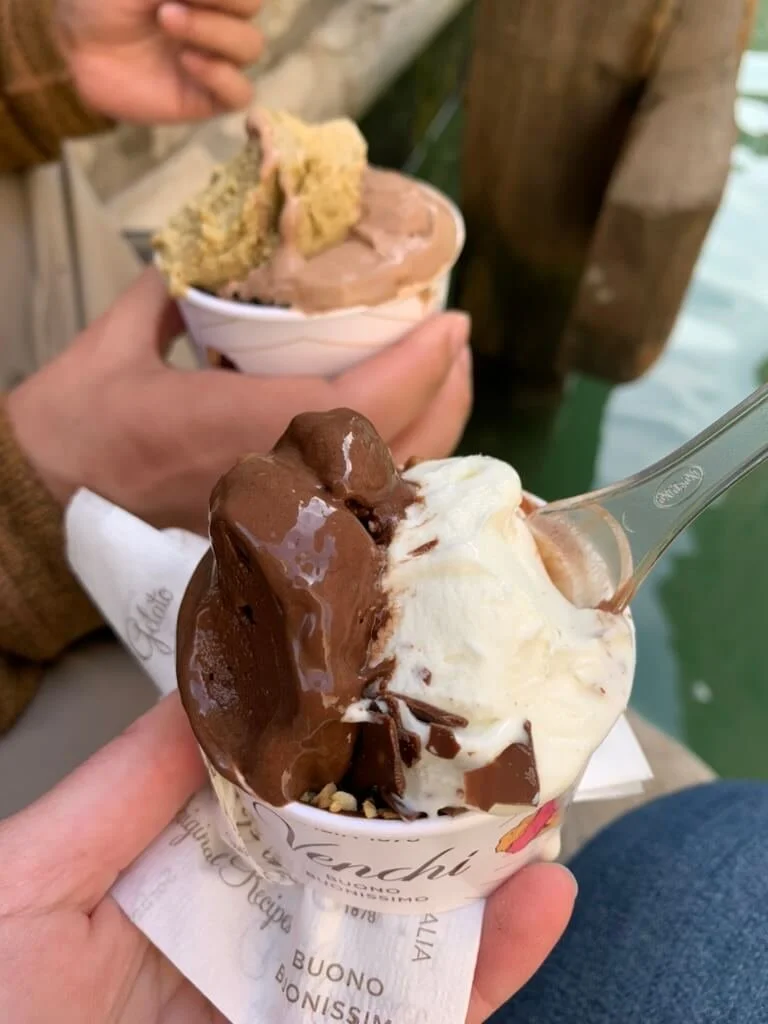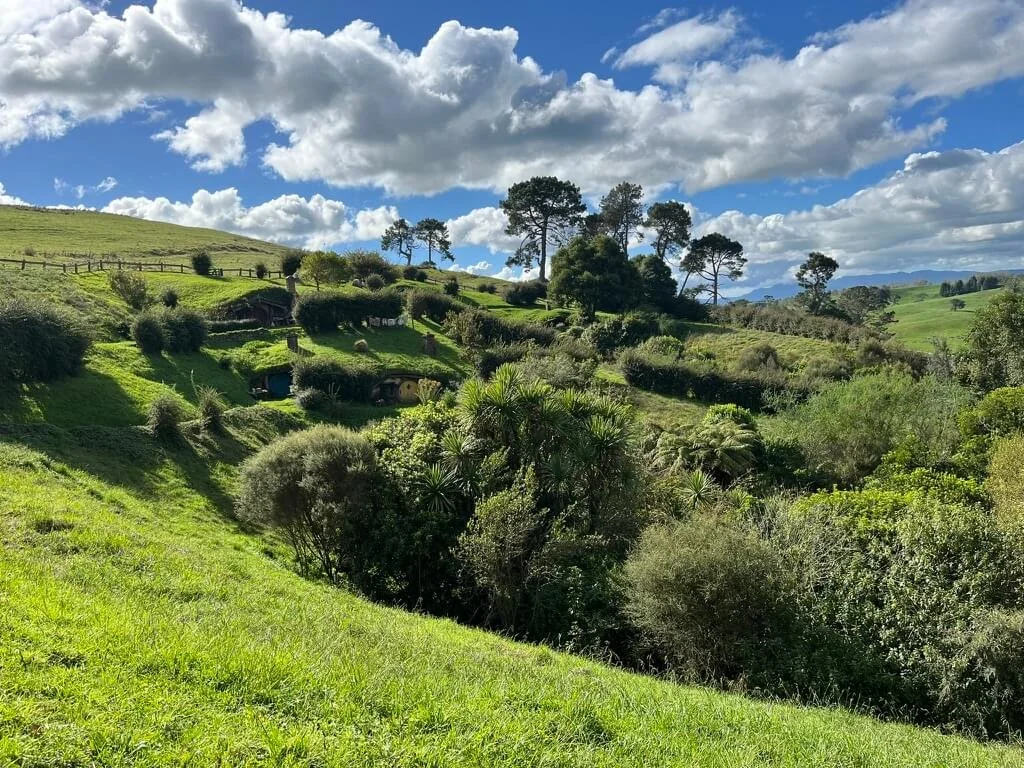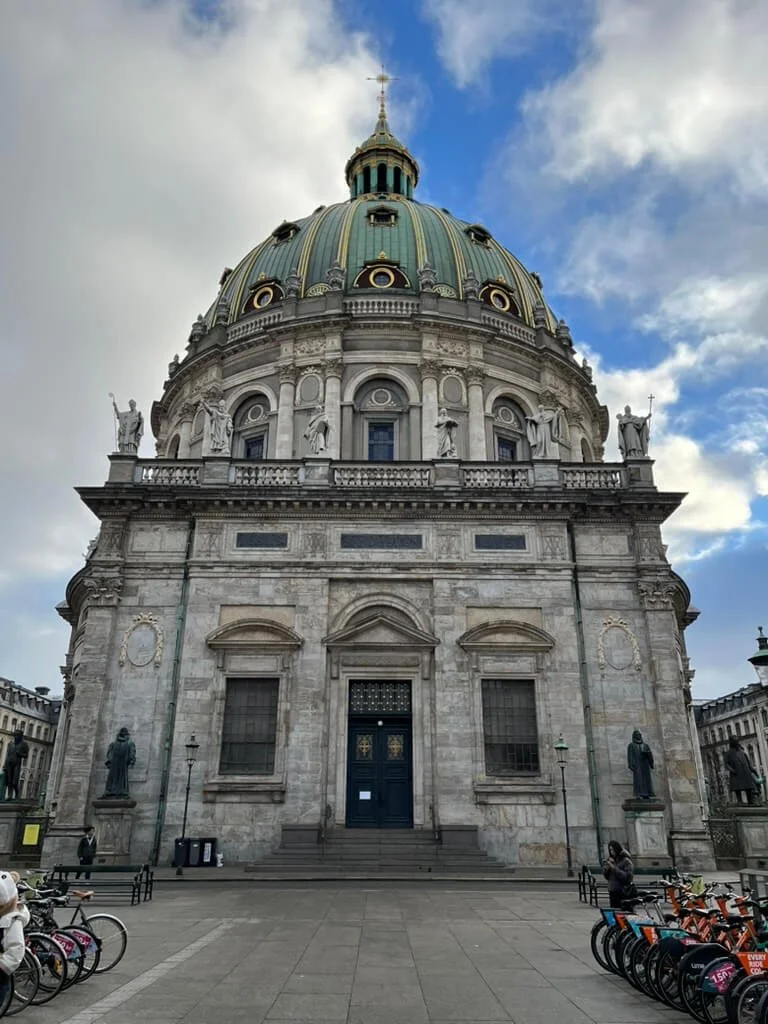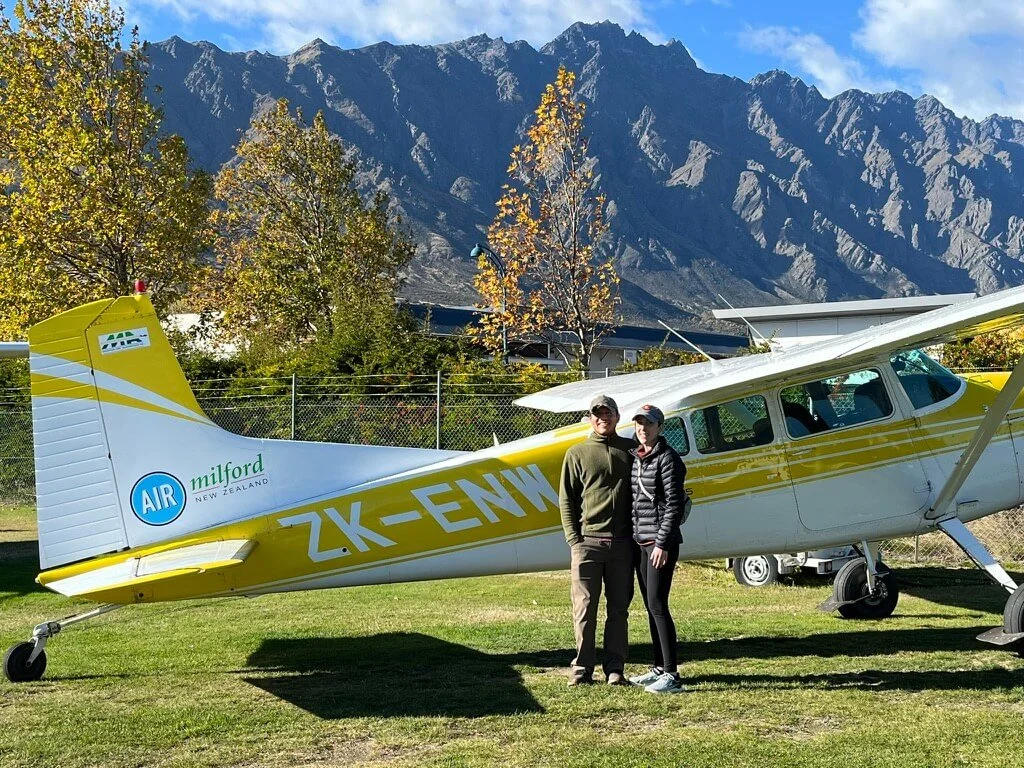6-Day Fall Road Trip Through Alaska: From Seward to Denali (Childfree & Adventure-Focused)
A realistic, adventure-filled 6-day Alaska road trip itinerary from Seward to Denali, with tips for weather, wildlife, and flexible travel.
If you’re dreaming of Alaska but don’t want to cram your days with back-to-back tours or endless driving, a 6-day fall road trip hits the sweet spot. We spent time exploring from Seward to Denali, giving ourselves time to breathe, pivot when the weather shifted (which it did often), and enjoy this raw, moody, and unbelievably beautiful part of Alaska.
This trip had its share of rain, canceled plans, and long stretches of road (like our Iceland Ring Road Itinerary)—but also glaciers, wildlife, and the kind of scenery that makes you feel very small in the best way possible.
Table of Contents Show
Day 1: Arrival in Anchorage + Drive to Seward
We landed in Anchorage in the afternoon, picked up our rental car, picked up groceries, and hit the road toward Seward—a roughly 2.5-hour drive that winds through the stunning Turnagain Arm and the Chugach Mountains. By the time we arrived, rain was moving in (a theme for this trip), so we settled into our cozy Airbnb, made dinner, and enjoyed the sound of the storm rolling through.
Day 2: Stormy Seas & A Canceled Kayak Tour
Our kayaking excursion was canceled due to a storm rolling through, but we decided to tough it out and hop on a last-minute boat tour of Kenai Fjords National Park with Kenai Fjords Tours.
Kenai Fjords National Park is where Alaska’s wild coastline and icy wilderness collide. Just outside Seward, the park is home to towering tidewater glaciers, emerald fjords, and abundant marine wildlife—from sea otters to humpback whales. Even on stormy days, the dramatic mix of rugged cliffs and crashing waves makes it unforgettable. Whether by kayak, cruise, or scenic trail, Kenai Fjords is the kind of place that reminds you how small we really are.
“Rough seas” is an understatement—it was a wild ride with 10-foot seas that made about half of the tour-goers sick (thankfully not us). Despite the weather and less-than-ideal conditions, we caught glimpses of bald eagles, otters, orca whales, and rugged glaciers. It was absolutely worth it, but we sure were glad to be back on land after it was over.
We headed over to Sweet Darlings for some sweet treats—a reward for surviving the seas. That night, we dried off, cooked dinner at our Airbnb, and called it an early night.
Day 3: Exit Glacier + Drive Back to Anchorage
We checked out after breakfast and drove to Exit Glacier. Just outside Seward, Exit Glacier is one of the few glaciers in Alaska you can easily walk right up to. A short trail leads to viewpoints where you can see deep blue ice and the signs marking how far the glacier has retreated over the years—a sobering reminder of how quickly Alaska’s landscape is changing.
It’s an easy, accessible stop that delivers big payoff, especially if you’re short on time or want a glacier experience without booking a tour.The short hike to the overlook was easy and scenic, with blue ice peeking through the mist.
Afterward, we made the drive back to Anchorage, stopped for lunch, and spent the afternoon at the Anchorage Museum, a great rainy-day option. Make sure to check out the Alaska exhibition that tells Alaska’s story, it’s phenomenal.
That evening, we explored a few shops downtown and grabbed reindeer sausages from Red Umbrella Reindeer for dinner (an Alaskan specialty). They were delicious!
Day 4: Flightseeing in Talkeetna + Drive to Denali
We left Anchorage early to reach Talkeetna for a 10:15 a.m. flightseeing tour with Talkeetna Air Taxi. It was a splurge but it was absolutely worth every penny.
We took the “Grand Denali” tour, which is billed as the definitive flightseeing experience over the Alaska Range. The route crosses the Alaska Range, takes in the arctic alpine tundra of the remote northern side of Denali National Park, and showcases dramatic features like the Great Gorge of the Ruth Glacier and the Wickersham Wall.
It was about 2 hours in the air (we opted to add a glacier landing). For us, the clear skies at take-off made it one of the best decisions of the trip—seeing Denali (North America’s highest peak at 20,310 feet) and the surrounding peaks from above is a perspective you won’t get any other way.
After a quick lunch at Flying Squirrel Bakery & Cafe (try the birch steamer!), we drove north to Denali National Park, checking into our hotel with enough time to enjoy some tasty burgers for dinner at 49th State Brewing.
Day 5: Exploring Denali by Bus
We spent the day exploring Denali National Park and Preserve via the transit bus to Eielson Visitor Center. It’s a long ride but packed with wildlife sightings: grizzlies, caribou, and moose wandering freely through open tundra. The scenery changes constantly, and the sense of scale is unreal. It’s easy to hop off for photos or short walks, then hop back on as space allows. We did the 2-mile Savage River Loop hike and enjoyed a mellow walk along the river (without any bear encounters thankfully!).
Denali National Park feels like stepping into another world—six million acres of untouched wilderness, one long road, and the towering presence of North America’s highest peak. Even if Denali itself hides behind clouds, the landscapes alone make the journey worth it; it’s quiet, vast, and humbling.
Taking the transit bus deep into Denali reminded us how much we love slow, immersive travel, the kind that gives you space to notice things. It’s the same mindset behind my Choosing Experiences Over Things post.
Day 6: Denali to Anchorage
After breakfast, we started the five-hour drive back to Anchorage. The fall colors along the Parks Highway were stunning—golden birch and red tundra stretching for miles. Once in town, we checked into our hotel and debated hiking Flattop Mountain, but opted for a steamy bowl of phở (the perfect cold weather food) and bánh mì at Phở Lena instead. We spent the evening packing and reflecting on our six days, hundreds of miles, and countless reminders that Alaska doesn’t need perfect weather to be unforgettable.
Tips for a Fall Alaska Road Trip
Expect unpredictable weather. Bring layers, rain gear, and patience—plans can change quickly.
Start early. Daylight fades quickly in late fall due to Alaska’s northerly location.
Stock up before you go. Food and gas options become sparse between towns. We brought lots of prepackaged meals and snacks to cover the gaps.
Book tours in advance. Denali buses and tours tend fill up quickly even in shoulder season.
Download offline maps. You’ll lose service often while on the road.
Be flexible with your schedule. Rainy days are inevitable—embrace them. You might need to pivot from an outdoor activity to an indoor one at a moment’s notice.
Take your time. The drives are long, but that’s where Alaska really shines. Stop at the pull-offs to take photos and pause to appreciate the natural beauty.
Final Thoughts
This trip wasn’t smooth sailing (literally), but it reminded us why we keep seeking out quieter, wilder places. Traveling childfree meant we could lean into the unexpected, skip what didn’t work, and linger when something felt special.
You can also read how we use travel to reconnect with what matters most in my Travel as a Reset Button post.
If you’re looking for an authentic fall road trip through Alaska, this route balances the wild and the practical—just don’t forget your rain gear.
Have you done an Alaska road trip? Drop a comment with your favorite spots—I’d love to hear what surprised you most about traveling in the Last Frontier.
Choosing Experiences Over Things: How Travel Reminds Us What Really Matters
We don’t remember the things we owned, but the places we went and how they made us feel. Here’s how travel continues to remind us what really matters — and why experiences are the best investment of all.
We live in a world that constantly tells us to buy more. The next phone, the next outfit, the next piece of décor that promises happiness. But when I think back on the moments that have actually stayed with me, they aren’t things I’ve bought. They’re experiences I’ve lived.
And travel, especially the kind that’s simple and real, reinforces that truth again and again.
The Fleeting Joy of “Stuff”
There’s nothing wrong with wanting nice things. But possessions have a short shelf life when it comes to fulfillment. The excitement of something new fades quickly and is soon replaced by the next desire on our list.
Experiences, on the other hand, grow in value over time. The budget-friendly guesthouse where you made friends over coffee, the local bakery you stumbled into on a rainy morning — those memories age beautifully. They become part of who you are, not just what you own.
How Travel Reinforces the Value of Experiences
When we travel (especially as adults without kids), every day holds the potential for discovery. Whether it’s figuring out a foreign train system, tasting a dish we can’t pronounce, or watching the sunrise in a place we’ve only ever seen in photos, these moments make us feel alive.
They’re fleeting but somehow permanent, etched in memory long after the souvenirs have gathered dust.
In his book Die with Zero, author Bill Perkins calls this the memory dividend. It’s the idea that every experience you invest in pays ongoing returns through the joy of remembering it — the stories you tell, the feelings you revisit, the perspective you gain. Each trip or moment you truly live keeps giving back long after it’s over.
Travel teaches us that:
A shared meal with new friends can be more memorable than a Michelin star dinner.
A disastrous hike through the rain can become one of your favorite travel stories.
Some of the best souvenirs are the ones you can’t pack: laughter, awe, and connection.
Why Experiences Deepen Our Relationships
When we choose experiences over things, we also choose connection. Travel naturally brings people closer through shared challenges and discoveries. We remember the time we huddled under one umbrella in a downpour, the bus ride that went completely sideways but led to an incredible (or hilarious) story, or the quiet comfort of just being somewhere new together.
Those moments build a deeper kind of wealth that no possession can match.
Bringing the Mindset Home
You don’t have to constantly travel to live this way (who could afford that?!). Travel simply teaches us how to notice, and to appreciate the ordinary as if we were seeing it for the first time. It’s the same mindset that makes an impromptu picnic, a new recipe, or a walk at sunset feel just as meaningful as a faraway adventure.
Because when you value experiences over things, you start to realize: the richness of life isn’t in what you own, it’s in what you live every day.
Final Thoughts
Travel reminds us that happiness isn’t found in what we own, but in what we experience.
And the best part? You don’t need a luxury budget to live that way. Just curiosity, openness, and a willingness to trade more stuff for more living.
Ready to start collecting your own memory dividends? Plan a trip that focuses on moments, not things — even if it’s just a weekend getaway close to home.
Travel as a Reset Button: How We Use Trips to Re-Energize Daily Life
Travel isn’t just about getting away — it’s about pressing pause. Here’s how we use childfree, budget-friendly trips to recharge and come home re-inspired.
Sometimes we don’t travel to “escape” — we travel to reset.
Travel isn’t just about getting away — it’s one of the best ways to reset your mind, recharge your energy, and re-energize daily life.
Between the routines, the work deadlines, and the endless stream of daily noise, life can start to feel like a blur. Travel gives us the jolt we need to remember that there’s more out there — and more in us, too. For my husband and me, every trip is a chance to shake off autopilot, recharge our energy, and come home more grounded and with a fresh perspective.
Why We Travel Without Guilt
Traveling childfree gives us a different kind of freedom — not better, just different. We don’t have school calendars to work around or family-friendly resorts on our list. We can take off-season trips, chase shoulder-season deals, and plan entire days around food, hiking, or wandering aimlessly through a city.
But beyond the logistics, childfree travel gives us space — mental, emotional, and physical space to just be. We can be spontaneous. We can be quiet. We can do nothing and not feel like we’re wasting time. That kind of breathing room is rare, and travel reminds us how good it feels.
The “Reset” Doesn’t Have to Be Big
A reset doesn’t always mean a two-week escape to another continent. Sometimes it’s a long weekend somewhere new, or even a day trip that changes your surroundings enough to shift your perspective.
Some of our best resets have come from simple, budget-friendly getaways:
A week-long trip to Hawaii where we adopted the slower island lifestyle.
A spontaneous weekend getaway in Seattle that reminded us how much we love walking everywhere.
A scenic drive to the mountains just to get out and appreciate the gorgeous fall foliage.
The key isn’t how far you go — it’s breaking the routine long enough to see things a bit differently.
How We Use Travel to Re-Energize Daily Life
When we get home, we try to hold onto the energy from our reset for as long as we can (sadly, it doesn’t last forever). Here’s how we do it:
Bring back one habit. Maybe it’s the slow mornings we enjoyed on vacation, or the evening walks after dinner. We pick one thing that felt good to us and try to make it part of our normal routine.
Re-evaluate our priorities. Travel makes it clear what we do and don’t miss about everyday life. We notice what feels heavy when we return, which helps us adjust our list of what’s important and what isn’t.
Plan the next trip. Even if it’s just penciling in a day trip, having something on the horizon helps us stay motivated and gives us something to look forward to. Anticipation is its own form of energy.
Reconnect with each other. Traveling without distractions always brings us closer. We talk more, laugh more, and remember why we make such good travel partners, which carries over long after the trip is over.
The Power of the Pause
Travel isn’t a cure-all, but it is a pause button — a moment to stop, reset, and come back better. It’s about remembering that life doesn’t have to be lived on autopilot.
For us, that’s what keeps travel meaningful. It’s not about checking off countries or chasing Instagram moments. It’s about using travel as a reset button — so that when we return home, life feels a little lighter, fresher, and more intentional.
Because sometimes, the best version of yourself is the one who just got back from a trip.
How do you use travel as a reset? Drop your thoughts in the comments — I love hearing how other childfree travelers use travel to recharge.
If this post resonated with you, be sure to check out:
7 Days in Italy: When Travel Doesn’t Go as Planned (But You Still Make It Work)
Our week in Italy didn’t go exactly as planned — there were hospital visits, slow days, and plenty of gelato-fueled recovery time. But between Florence’s golden skyline, Bologna’s comforting pasta, and Venice’s quiet canals, we still found the magic of travel — even when it wasn’t perfect.
A one-week Italy itinerary through Florence, Bologna, and Venice — with a dose of real-life travel chaos and how we made the best of it.
Italy had been on our travel wish list for years—art, history, pasta, and wine all wrapped up in a week of adventure. What we didn’t expect was that our trip would turn into a crash course in rolling with the punches. Between my sudden GI illness and my husband’s lingering cold, we learned firsthand that sometimes travel isn’t picture-perfect. Still, even when things don’t go as planned, Italy has a way of shining through.
Traveling childfree gave us the flexibility to adjust quickly—no nap schedules, no extra logistics—just the two of us figuring out how to make the best of things. Here’s how our 7 days in Italy itinerary unfolded, health hiccups and all.
If you enjoy honest, low-fuss itineraries, check out my 5-day North Island New Zealand Itinerary.
Table of Contents Show
Day 1: Florence Arrival
We landed in Florence in the afternoon and dove straight into Italian life with dinner at All’Antico Vinaio, famous for its enormous sandwiches stuffed with local ingredients. Fueled up, we strolled the city: gazing at the Duomo at golden hour, crossing the Ponte Vecchio, and soaking in sweeping views from Piazzale Michelangelo. It felt like the dream start to the trip we’d been planning.
Highlights
Duomo (Cathedral of Santa Maria del Fiore): Florence’s most iconic sight, this grand cathedral dominates the skyline with its red-tiled dome and marble-striped facade. Climb to the top for sweeping city views or simply admire its architectural brilliance from the square below.
Ponte Vecchio: A medieval bridge with a storybook feel, Ponte Vecchio is lined with jewelry shops that shimmer in the sunlight. Stroll across for postcard-perfect views of the Arno River — especially as the evening lights start to glow.
Piazzale Michelangelo: Perched above the city, this famous viewpoint offers one of the most breathtaking panoramas in Italy. Come at sunset to watch Florence bathe in golden light as the Duomo and Arno River stretch out below.
Duomo (Cathedral of Santa Maria del Fiore)
Day 2: An Unplanned Hospital Adventure
In the middle of the night, things took a turn—I became violently ill and ended up taking an ambulance to the hospital. After hours of IV fluids, bloodwork, and waiting, I was discharged around 4 a.m. With no taxi showing up, we walked back to our hotel in the dark, exhausted but relieved.
While I spent the day recovering (thank goodness for HGTV in Italian), my husband explored Florence solo. It wasn’t what we envisioned, but it was a reminder that sometimes travel forces you to slow down—whether you like it or not.
Day 3: Catching Up in Florence
Still weak but determined not to waste the day, I rallied. We headed to Mercato Centrale for a casual lunch, climbed Giotto’s Bell Tower for views over the city, and wandered Piazza della Signoria, Florence’s open-air gallery of statues and history. We had to cancel our Tuscany wine tour, but making it out at all felt like a victory.
Highlights
Mercato Centrale: A paradise for food lovers, Mercato Centrale brings together local vendors serving fresh pasta, pizza, cheese, and wine under one roof. It’s the perfect place to sample regional flavors and refuel between sightseeing.
Giotto’s Bell Tower: A masterpiece of Gothic architecture, Giotto’s Bell Tower stands tall beside the Duomo, wrapped in colorful marble panels. Climb its 414 steps for one of the best views of Florence — including the Duomo itself.
Piazza della Signoria: Florence’s open-air museum, this lively square is filled with sculptures, fountains, and Renaissance grandeur. Snap a photo with a replica of Michelangelo’s David and soak in centuries of history all around you.
Piazza della Signoria
Day 4: Bologna Detour & Onward to Venice
By now, my husband was starting to feel the tickle of a cold just as I was barely recovering. Still, we made it onto the train for Bologna, where we joined a food tour at Mercato delle Erbe. Tagliatelle al ragù, tortellini in brodo, and other regional specialties gave us a much-needed morale boost. Then it was onward to Venice, where the winding canals would become both our playground and our sickbed.
Highlights
Mercato delle Erbe: This indoor market is a local favorite for fresh produce, cured meats, and casual eateries. It’s an authentic taste of Bologna’s food culture — best enjoyed with a glass of wine during your food tour.
Fresh pasta in Bologna
Day 5: Venice in Shifts
I was improving, but my husband’s cold was in full force. We took things slowly: walking over the Rialto Bridge, sitting in Piazza San Marco, and enjoying lunch before visiting Teatro La Fenice, Venice’s storied opera house. We moved at half-speed, but Venice rewards wandering, even when you’re dragging your feet.
Highlights
Rialto Bridge: The oldest and most famous bridge in Venice, the Rialto is a must-see spot for classic canal views. Visit early in the morning or at dusk to beat the crowds and watch gondolas glide beneath.
Piazza San Marco: Venice’s grand central square, surrounded by elegant arcades, St. Mark’s Basilica, and the Campanile tower. It’s busy but beautiful — best experienced with a coffee in hand and time to linger.
Teatro La Fenice: One of Italy’s most historic opera houses, La Fenice is a stunning example of Venetian elegance. Even if you don’t see a performance, the guided tour offers a glimpse into its lavish golden interior.
Piazza San Marco
Day 6: Survival Mode
At this point, neither of us was at 100%, so we took our time as we wandered the city. We toured the Bridge of Sighs and Basilica di San Marco early, then retreated for coffee and pastries in Cannaregio (the Jewish Ghetto). The afternoon included quirky chocolate tastings at Nino and Friends, browsing at Libreria Acqua Alta, and squeezing down Calle Varisco, Venice’s narrowest street. It was a mix of sightseeing and resting in equal measure.
Highlights
Bridge of Sighs: An ornate limestone bridge connecting the Doge’s Palace to the old prison, the Bridge of Sighs is steeped in legend. Its name comes from the sighs of prisoners glimpsing Venice for the last time through its small windows.
Basilica di San Marco: This glittering Byzantine masterpiece is a feast for the eyes, filled with golden mosaics and intricate details. Arrive early to avoid crowds and take in the sheer opulence of Venice’s most famous church.
Cannaregio (Jewish Ghetto): Venice’s most authentic and peaceful neighborhood, Cannaregio offers quiet canals, cozy cafés, and deep history. It’s the perfect escape from the city’s bustle — ideal for a slow morning coffee or evening stroll.
Libreria Acqua Alta: This quirky bookstore is famous for its overflowing stacks of books stored in bathtubs and gondolas to protect them from floods. Don’t miss the book staircase in the courtyard — it’s one of Venice’s most Instagrammed corners.
Calle Varisco: Known as one of Venice’s narrowest streets, Calle Varisco is a fun, blink-and-you’ll-miss-it stop. Wander through for a quick photo and the novelty of squeezing down a passage just 53 cm wide.
Bridge of Sighs
Day 7: Murano & A Classic Gondola Ride
For our final day, we leaned into lighter joys: a ferry ride to Murano to watch glassblowers at work, gelato in the sun, a gondola ride through Venice’s side canals, and a quiet visit to Chiesa di San Zaccaria. It wasn’t the energetic finale we’d imagined, but it was quietly memorable.
Highlights
Murano: Just a short ferry ride from Venice, Murano is world-famous for its centuries-old glassmaking tradition. Watch artisans at work or browse the island’s boutiques for one-of-a-kind souvenirs.
Gelato: Because no trip to Italy is complete without it. From creamy pistachio to stracciatella, it was joy in a cone.
Gondola Ride: Touristy, yes—but drifting through side canals is still Venice at its most magical.
Chiesa di San Zaccaria: A hidden gem near St. Mark’s, this quiet church holds Renaissance masterpieces and an atmospheric crypt that often floods with lagoon water. It’s a peaceful break from Venice’s main sights.
Gelato makes everything better!
Travel Tips for When You’re Sick (Because It Happens!)
No matter how much you plan or prep, sometimes your body has other ideas. Getting sick on vacation is the worst — especially when you’re in an unfamiliar country. But here’s what we learned from our experience.
1. Don’t push yourself.
It’s tempting to power through, but rest really does speed up recovery. Missing one tour is better than being down for three days because you overdid it. Let yourself nap, stay hydrated, and embrace the slower pace.
2. Know where the nearest hospital or clinic is.
You hope you’ll never need it, but if you do, you’ll be grateful to know where to go. Bonus: no astronomical U.S. hospital bill (if you’re outside the U.S.).
3. Always have travel insurance.
It’s not glamorous, but it’s the adulting side of childfree travel. A good plan covers medical emergencies, canceled tours, and extra hotel nights if needed. It’s peace of mind you won’t regret. We use Blue Cross Blue Shield Global Solutions (full disclosure: we have not filed a claim with them).
4. Keep a mini “sick kit” in your bag.
Pack electrolyte packets, anti-nausea meds, Imodium, ibuprofen, and cold medicine at minimum. You can find pharmacies in many countries, but having your own stash saves you when an illness hits and buys you time to figure out where to get medicine if you need it.
5. Adjust expectations — not your attitude.
Some of our favorite travel memories come from the unexpected. Watching HGTV in Italian while eating crackers wasn’t on the itinerary, but it became part of the story. Travel isn’t always picture-perfect, and that’s okay.
6. Take turns caring for each other (if you’re traveling with a partner).
When you’re traveling as a couple, teamwork matters. One person might be exploring solo (and picking up meds from the local pharmacy) one day while the other recovers. It’s part of navigating life while traveling.
Final Thoughts: When Travel Gets Messy
To be totally honest, this wasn’t the trip we pictured. We missed Tuscany’s rolling hills, had to cancel plans, and spent more time nursing ourselves back to health than sipping wine. But here’s what we learned:
Travel rarely goes perfectly. Even in Italy.
Traveling childfree gave us the flexibility to adapt. We didn’t have to juggle kids’ needs on top of our own, which made it easier to slow down when we needed to.
Sometimes the best memories come from the unexpected. Like watching Italian home-renovation shows in a hotel bed, or laughing at the absurdity of walking home from the hospital at 4 a.m.
Italy reminded us that travel isn’t about checking boxes—it’s about the experience, however messy it might be. And sometimes, the stories you didn’t plan for are the ones that stick with you the longest.
Have you ever had a trip go sideways? How did you make the best of it? Share your story in the comments!
Weekend Getaway in San Diego: Spring Sunshine by the Sea
San Diego in spring is all sunshine, sea breezes, and laid-back charm. This 3-day itinerary covers Coronado’s beaches, La Jolla’s cliffs, the world-famous Zoo, and plenty of must-eat local bites—from fish tacos to California burritos. A perfect long weekend for travelers who want a flexible, childfree-friendly getaway.
San Diego has a way of slowing you down—in the best possible way. With sparkling beaches, a laid-back vibe, and plenty of good food to fuel your days, it’s the perfect city for a long weekend escape. We visited in the spring, when the weather was warm but not sweltering, the skies were bright, and the crowds were manageable.
This 3-day itinerary blends iconic highlights, seaside adventures, and plenty of time for simply soaking in the coastal atmosphere. It’s tailored for travelers who want a flexible, no-fuss trip without juggling nap schedules or kid-friendly stops—just the freedom to explore at your own pace.
Friday: Coronado Island & Coastal Calm
We landed in San Diego around 10 a.m. and headed straight for Coronado Island, just across the bay from downtown. Crossing the sweeping Coronado Bridge gives you a postcard-worthy view of the city skyline and the endless Pacific beyond.
Our first stop was Coronado Beach, famous for its golden sand that actually glimmers thanks to mica in the shoreline. Wide and flat, it’s the kind of beach that makes you want to kick off your shoes and just wander. The backdrop of the historic Hotel del Coronado—a red-turreted Victorian masterpiece—adds a dose of storybook charm. Be sure to grab some Baja-style fish tacos on Coronado. It’s the perfect introduction to San Diego’s food scene—crispy, fresh, and full of flavor.
Coronado itself feels like a world apart from the city: palm-lined streets, casual cafés, and boutique shops that invite slow browsing. We popped into a coffee shop on Orange Avenue, strolled the little neighborhoods, and watched surfers carve through the waves.
By late afternoon, we made our way back into San Diego, checked into our hotel, and decided on an early night. After traveling, sometimes the best way to start a trip is to let yourself settle in with no pressure to do more.
Saturday: Gaslamp Vibes, Waterfront Strolls & La Jolla Adventure
Saturday was our “big explore” day, and we started in the heart of the city: the Gaslamp Quarter. This neighborhood combines Victorian architecture with a lively mix of brunch spots, breweries, and rooftop bars. Without kids in tow, you can linger over a second latte, browse boutique shops, or simply wander the brick-paved streets at your own pace.
From there, we walked down to the Seaport Village, a waterfront area dotted with shops and restaurants, and then along the Embarcadero. Here you’ll find sweeping views of the bay and attractions like the USS Midway Museum, an aircraft carrier turned floating museum that dominates the harbor. Even if you don’t go aboard, just seeing its sheer scale is impressive.
By early afternoon, we drove north to La Jolla for one of the highlights of our trip: a kayak tour with La Jolla Sea Cave Kayaks. Paddling through the surf with sea cliffs towering above us felt adventurous yet accessible, and spotting sea lions sunbathing on the rocks was a bonus. The guides pointed out hidden sea caves and told stories about the marine life, making the experience both active and educational.
After kayaking, we explored La Jolla on foot. The La Jolla Cove is small but stunning, framed by cliffs and home to dozens of barking sea lions. We meandered along the coastal paths, stopping at tide pools and lookout points that seemed to be made for photo ops.
We capped the day with a San Diego specialty, California burritos. It’s a local invention stuffed with carne asada, cheese, guacamole, and French fries. It sounds over the top, but it’s peak San Diego comfort food.
Sunday: Zoo Wonders & Balboa Beauty
For our last day, we checked out of our hotel but kept the adventure going. Our first stop was the San Diego Zoo, often ranked among the best in the world. Unlike many zoos, this one feels more like a botanical garden crossed with an animal sanctuary—lush, green, and beautifully laid out. Highlights included giraffes stretching for snacks, the playful antics of the monkeys, and the aviaries filled with vibrant tropical birds. Even if you’re not usually a zoo person, this one is worth it.
Red panda at the San Diego Zoo—so cute!
From the Zoo, it’s an easy transition into Balboa Park, San Diego’s cultural crown jewel. This massive urban park is home to Spanish-style architecture, fountains, and manicured gardens. You can pop into museums if you want (the San Diego Museum of Art and the Natural History Museum are standouts), or simply enjoy the park’s walkways and courtyards.
Spring made it especially lovely—bougainvillea spilling over walls, bursts of flowers in the gardens, and perfect weather for strolling. We found a bench near one of the fountains and let the afternoon slow to a stop before heading to the airport. Before leaving, grab a warm churro from one of the stands near Balboa Park. Simple, sweet, and the perfect farewell to San Diego.
Balboa Park
Final Thoughts
San Diego in the spring is all about balance: mornings by the beach, afternoons on the water, evenings with good food. This itinerary mixes a little adventure with a lot of downtime, ideal for travelers who prefer a flexible pace. Whether it’s the coastal views in La Jolla, the iconic animals at the Zoo, or that first bite of a California burrito, San Diego makes for a weekend getaway that feels both easy and unforgettable.
No stress. No rigid plans. Just sunshine, sea air, and a city that rewards you for slowing down.
This post is part of my Weekend Getaways in the U.S. series. Check out Seattle in Autumn for another quick, budget-friendly city break.
Have you spent a weekend in San Diego? What was your favorite spot—or your must-eat food? Share your tips in the comments below—I’d love to hear them!
Travel Light, Spend Less: 10 Budget Perks of Traveling Childfree
Traveling childfree isn’t just about freedom—it’s about stretching your budget further. From cozy studio stays and off-season flight deals to eating street food and packing light, there are countless ways travel without kids saves you money. Here are ten budget perks of childfree travel that let you spend less where it doesn’t matter and more where it truly does.
Traveling without kids doesn’t just give you freedom—it gives you financial flexibility. When you’re not paying for extra tickets, bigger hotel rooms, or kid-friendly add-ons, your travel dollars can go a whole lot further. Traveling childfree means you can focus your budget on the things you actually want, while skipping the inevitable costs of family travel.
Here are ten reasons why childfree travelers often find their trips are not only smoother, but also significantly cheaper.
1. Smaller, Cheaper Accommodation Options
Without the need for extra beds, cribs, or kid-focused amenities, you can stay in compact studios, boutique hotels, or budget-friendly apartments. In Copenhagen, for example, we booked a small but stylish city-center hotel that would have felt cramped with kids—but for two adults, it was perfect and affordable. Even quirky options like capsule hotels in Japan or private hostel rooms in Europe suddenly make sense (and save you serious money).
2. Flexible Travel Dates = Lower Prices
Parents are tied to school calendars, meaning peak-season prices. Traveling childfree means you can travel in the shoulder season, chase last-minute deals, and fly mid-week—often saving hundreds on flights and hotels. When we visited Iceland in September, we got lower airfare and cheaper car rentals than we would have in July, plus we had waterfalls and hot springs practically to ourselves.
3. No “Kid Taxes” on Tickets & Meals
Extra tickets to attractions, family meal add-ons, and overpriced “kid-friendly” experiences all add up. With just two adults (or one if you’re traveling solo), you’re only paying for what you’ll actually use. In Hawaii, we split poke bowls from a local market that easily fed both of us for under $15—a simple but satisfying budget win.
4. Lighter Packing = Lower Airline Costs
Families often pay for checked bags full of strollers, toys, and extras. Childfree travelers can often pack light, go carry-on only, and avoid baggage fees—making budget airlines much more manageable. On our New Zealand trip, we each traveled with just a carry-on and a backpack, which not only saved us money but made moving between islands so much easier. When you’re traveling childfree, packing light isn’t just possible—it’s liberating.
5. More Dining Flexibility
No picky eaters, no early meal schedules (unless you want them!). You can eat where and when you want—taking advantage of happy hours, late-night food stalls, or wine bars. In Copenhagen, we lingered over smørrebrød at Torvehallerne Market one afternoon and then grabbed cheap and delicious sweets while wandering the city. In Iceland, bakery stops became our go-to budget meals—rugbraud (rye bread) and pastries that cost a fraction of a sit-down dinner.
6. Easier (and Cheaper) Transportation
No need for car seats or oversized vehicles. You can rely on public transportation, scooters, overnight buses, or budget-friendly trains. When we took the train from Copenhagen to Malmö, it was quick, cheap, and stress-free—something that would’ve been trickier with strollers and nap schedules. In Iceland, we rented the smallest car possible—a beat-up VW Golf—which cost far less than a family SUV and still took us around the entire Ring Road.
7. Freedom to Choose Budget-Friendly Destinations
Families often gravitate toward resorts or amusement-park-heavy spots. Traveling childfree means you can head to countries with favorable exchange rates or less-touristy regions that deliver big value—like Portugal instead of France, or Colombia instead of Costa Rica. On the Big Island of Hawaii, we skipped pricey resorts and spent part of our stay in Hilo, where accommodations were cheaper and farmers’ market fruit bowls became our daily breakfast. Without kids, your destination list widens and your budget stretches.
8. Ability to Splurge Where It Counts
Instead of spending money on kid-friendly activities, you can redirect your budget toward meaningful splurges: a tasting menu dinner, a boutique hotel night, or an adventure tour. In New Zealand, we saved money by self-catering most meals but splurged on a Doubtful Sound cruise—a memory worth every penny. In Iceland, we cut corners on our accommodation but didn’t think twice about paying for the Hvammsvik Hot Springs, which turned out to be a highlight of the trip.
9. Lower Travel Insurance & Add-On Costs
The price of travel insurance, gear rentals, and guided tours multiplies quickly with a family. For one or two adults, those extras stay manageable. On our Iceland stopover, we only had to cover two people for ice climbing gear. That meant we could say “yes” to more adventurous activities without blowing our budget. Insurance, tour tickets, and even things like renting snorkeling gear in Hawaii are simply easier to justify when the numbers are small.
10. More Energy to Maximize Value
Traveling with kids often means shorter days and early nights. Childfree travelers can stretch their money by getting the most out of long days sightseeing, evening entertainment, or free walking tours. In Alaska, we explored all day and then stayed out chasing the midnight sun for photo ops. No way we could’ve packed in that much with kids.
Final Thoughts
Childfree travel is about freedom and flexibility. By traveling light, booking smarter, and skipping family-specific costs, you naturally stretch your budget further. In our own travels, we’ve found that being childfree doesn’t just save money—it gives us the option to reallocate those savings into experiences that matter most. Whether that’s a boutique hotel splurge in Copenhagen, an overnight cruise in New Zealand, or a geothermal soak in Iceland, the trade-off is worth it every time.
So if you’ve been holding back from planning that dream trip because of costs, remember: traveling childfree already gives you a head start. Spend less where it doesn’t matter, and more where it truly does.
What about you? What’s your favorite budget perk of traveling childfree? Share your tips in the comments below—or sign up for my newsletter down below for more low-fuss, budget-friendly travel ideas!
Weekend Getaway in Seattle: Autumn Adventures in the Emerald City
Seattle in autumn is equal parts cozy and adventurous—think misty mornings, bustling markets, and mountain views wrapped in fiery fall colors. This 3-day itinerary covers everything from quirky city icons like the Fremont Troll and Pike Place Market to a scenic drive around Mount Rainier, making it the perfect weekend getaway in the Pacific Northwest.
Seattle in autumn has a kind of magic all its own—misty mornings, cozy coffee shops, and crisp air that makes the fall colors pop against the skyline. I’m sharing our 3-day itinerary for exploring Seattle in the fall. It’s a mix of iconic sights, local eats, and a scenic escape to Mount Rainier that made for a busy but totally doable long weekend.
Friday: First Taste of Seattle
We landed at Seattle-Tacoma International Airport (SEA) around 10:30 a.m., grabbed our bags, and made our way into the city. After checking into our hotel and grabbing lunch, we set out for a casual first afternoon of exploring.
Highlights:
Fremont Troll: This quirky, larger-than-life public art installation tucked under the Aurora Bridge is a must-see. It’s playful, weird, and perfectly “Seattle.”
Gas Works Park: Next up was Gas Works Park, an old industrial site turned public green space. From here you get sweeping views of Lake Union with the skyline in the distance. Bonus points if you catch sea planes landing on the lake.
Flagship REI: For outdoor lovers, the flagship REI is worth a stop. It’s part store, part experience—complete with trails, climbing walls, and plenty of gear to inspire your next adventure.
Dinner with a View: We wrapped up the day with dinner at our hotel’s rooftop restaurant, taking in the city views and enjoying the gorgeous fall weather.
Saturday: Coffee, Markets & Iconic Views
Seattle mornings in the fall call for one thing: coffee. We’re not usually coffee drinkers but we couldn’t miss out on this quintessential Seattle experience. We chased it with a day filled with sightseeing and delicious local food.
Highlights:
Starbucks Reserve Roastery: We started the day at the Starbucks Reserve Roastery in Capitol Hill, where coffee gets the luxury treatment. It’s bigger, sleeker, and more experimental than your standard Starbucks. Be sure to get there early as it gets busy.
Pike Place Market: Pike Place Market is touristy, yes, but for good reason. We turned it into a mini food crawl, sampling bites from local favorites—something that’s much easier to do when you’re traveling light and childfree.
Beecher’s Handmade Cheese – Oozy mac & cheese, grilled cheese, basically all things cheese-related!
Piroshky Piroshky – Eastern European hand pies stuffed with a variety of both sweet and savory fillings.
Rachel’s Ginger Beer – Refreshing drinks made locally using fresh water, lemons, pure cane sugar and ginger.
Cinnamon Works – Allergy friendly, scratch-made cookies, pastries, and muffins. Don’t sleep on the giant chocolate chip cookie!
Free Walking Tour: To walk off all of the delicious food we joined a free walking tour. It was the perfect way to get some history and quirky facts about the city.
Kerry Park: No trip to Seattle is complete without this postcard view. From Kerry Park, you get the classic skyline shot with Mount Rainier towering in the distance (if it’s a clear day).
Seattle Center: We spent the rest of the afternoon at Seattle Center, home to the Space Needle, museums, and Chihuly Garden and Glass. Even if you skip the admissions, the grounds are worth a wander.
Sunday: Scenic Escape to Mount Rainier National Park
After checking out of our hotel early and grabbing a quick breakfast, we hopped on the train back to the airport, picked up a rental car, and set off for a day trip to Mount Rainier National Park. With towering evergreen trees lining the road, it felt like we were driving through a tunnel. As we made our way closer, Mount Rainier’s snowcapped peak appeared through the clouds like something out of a painting. We stopped at overlooks to breathe in crisp mountain air, watched fog drift lazily across alpine meadows, and listened to the quiet rush of streams cutting through the forest. Even without a long hike, the park gave us moments of pure stillness and awe that balanced perfectly with the bustle of the city.
It was the kind of ending that tied the whole trip together—a weekend that blended Seattle’s urban energy with the raw beauty of the Pacific Northwest, leaving us both recharged and already dreaming about our next weekend getaway.
Final Thoughts
Seattle in autumn is the perfect balance of cozy and adventurous. One moment you’re sipping a ginger beer at Pike Place while street musicians play in the background, the next you’re standing in front of Mount Rainier with nothing but the sound of wind in the trees. The city has its quirks—like a giant troll lurking under a bridge—and its icons, from the Space Needle to the first Starbucks. But what makes a fall weekend here special is how seamlessly it shifts from urban energy to natural wonder.
We left with the taste of coffee still lingering, the memory of fiery fall colors along mountain roads, and the kind of content exhaustion that only comes from a trip well spent. Seattle gave us exactly what we needed: a little weird, a little wild, and a lot of cozy Pacific Northwest charm.
Have you been to Seattle in the fall? What would you add to this weekend itinerary? Share your favorite Seattle spots or autumn adventures in the comments below — I’d love to hear your ideas!
Shoulder Season Travel: The Best Time to Explore Without the Crowds
Shoulder season travel is the sweet spot between peak crowds and off-season closures—when prices drop, the weather is comfortable, and destinations feel more authentic. For childfree travelers, it’s the ultimate hack: fewer strollers, shorter lines, and more freedom to explore at your own pace. From sipping wine in Tuscany without bus tours to wandering quiet streets in Bruges, shoulder season makes travel calmer, cheaper, and more rewarding. Of course, it comes with a few trade-offs—like unpredictable weather or reduced hours—but the benefits far outweigh the downsides. This guide breaks down the pros and cons of shoulder season travel and explains why it’s one of the biggest advantages of traveling childfree. Once you try it, you may never want to go back to peak-season trips.
When most people plan their vacations, they’re thinking peak summer or holiday travel. But seasoned travelers know there’s a secret sweet spot: the shoulder season.
If you’ve never heard the term, it refers to the time just before or after a destination’s high season—think May and September in Europe, or early spring and late fall in many U.S. destinations.
For childfree travelers, shoulder season is a game-changer: cheaper, calmer, and more enjoyable. Here’s why.
What Is Shoulder Season?
Shoulder season is the in-between period when the weather is still good, attractions are open, but the big crowds haven’t arrived (or have already gone home).
It falls between a destination’s peak season (when demand, crowds, and prices are highest) and the off-season (when many attractions may be closed and weather is less predictable).
If you want examples of how to plan trips in cooler months, check out my 4 Days in Copenhagen in Winter Itinerary or my 3-Day Iceland Stopover Guide. Both are shoulder-season friendly trips.
Pros of Shoulder Season Travel
1. Lower Prices
One of the biggest perks of shoulder season travel is the savings. Airlines, hotels, and even tour operators drop their prices once the summer rush or holiday crush is over. That means you can snag round-trip flights for less, book a boutique hotel that would’ve been out of reach in July, or stretch your budget by staying longer. For childfree travelers, this often means being able to allocate extra money toward experiences—like a cooking class in Italy or a glacier hike in Iceland—rather than just covering the basics.
2. Fewer Crowds
If you’ve ever tried to enjoy a world-famous site at peak season, you know how quickly the magic can vanish when you’re shoulder-to-shoulder with tourists. In shoulder season, you get to actually see and experience a place without the constant jostling. Imagine wandering through the streets of Dubrovnik, sitting in a quiet Parisian café, or strolling a trail in New Zealand without the bottleneck of high-season crowds. For those of us who travel childfree, the atmosphere feels calmer and more adult-friendly—fewer strollers, less chaos, and more space to just breathe it all in.
3. Milder Weather
Shoulder season often delivers the kind of weather that makes exploring enjoyable. No sweltering 100-degree heat while you’re trying to climb castle stairs in Lisbon, and no bone-chilling cold that keeps you indoors. Instead, think warm days for sightseeing and cooler evenings perfect for cozy dinners or long walks. This balance means you can do more—whether it’s hiking, wine tasting, or sightseeing—without feeling drained.
4. Better Interactions with Locals
When destinations are overflowing with tourists, locals are often stretched thin and just trying to keep up. In shoulder season, there’s room for slower, more authentic exchanges. You’re more likely to get a genuine chat with a barista, personal recommendations from a tour guide, or even a friendly smile from market vendors who aren’t overwhelmed by the peak-season rush. This makes the experience feel less transactional and more cultural—something many childfree travelers value.
5. Flexibility for Childfree Travelers
Perhaps the biggest advantage: you can travel when others can’t. Families are bound by school calendars, but being childfree gives you the flexibility to plan around the best times rather than the busiest ones. That freedom means you can grab last-minute deals, adjust your plans if the weather shifts, and enjoy destinations in a way that feels far more relaxed. Shoulder season rewards travelers who don’t have rigid schedules—and that’s exactly the sweet spot for childfree explorers.
Cons of Shoulder Season Travel
1. Unpredictable Weather
Shoulder season is a transitional period, which means the weather can be hit-or-miss. You could have a week of warm, sunny days—or you might get stuck with rain, fog, or chilly weather. A beach destination might not be quite warm enough for swimming, and mountain trails could still have snow. Flexibility and layered packing become essential, but if you’re the type who craves guaranteed perfect weather, this can be a drawback.
2. Shorter Hours & Limited Services
Many destinations adjust their schedules as peak season ends. Ferries might run less frequently, museums may close earlier, and certain seasonal restaurants or cafés could shut down entirely until the next high season. While this usually won’t stop you from enjoying a trip, it does require a bit more planning. Double-check opening times and consider booking in advance so you’re not caught off guard.
3. Fewer Festivals or Seasonal Events
Some of the most iconic festivals and seasonal highlights happen in peak season—think Oktoberfest in Germany, tulip fields in the Netherlands, or holiday markets in December. Traveling in shoulder season may mean missing those bucket-list events. On the flip side, you might stumble upon smaller, more local festivals that aren’t overrun by international tourists, but if your trip is centered around a big cultural happening, shoulder season may not align with your goals.
4. Destination-Specific Tradeoffs
Shoulder season isn’t equally great everywhere. For instance, visiting the Greek islands in October might mean fewer crowds, but also limited ferry service and shuttered beach clubs. A ski town in April could still have some snow, but slopes may be slushy and nightlife quieter. The trade-off is worth it for many travelers, but it’s important to set realistic expectations and research carefully so you don’t end up disappointed.
Why Shoulder Season is Perfect for Childfree Travelers
Being childfree gives you a huge advantage: flexibility. You’re not tied to school holidays, which means you can plan travel in those off-peak windows when destinations are calmer, cheaper, and more authentic.
You can also enjoy adult-friendly activities—like lingering in a wine bar, enjoying a long scenic hike, or having a late dinner—without the stress of family travel crowds.
For example, my 10-Day South Island New Zealand Road Trip and Day Trip to Malmö from Copenhagen both highlight how shoulder season makes travel less stressful and more rewarding.
Final Thoughts
Shoulder season travel isn’t about compromise—it’s about choosing a smarter, more balanced way to see the world. You still get the beauty of a destination, the culture, and the experiences, but without the stress that comes with peak-season travel. It’s the sweet spot between affordability, comfort, and authenticity.
For childfree travelers, this flexibility is one of your biggest travel superpowers. While others are limited by school breaks, family obligations, or holiday rushes, you can slip into destinations during their most enjoyable window. That means sipping wine in Tuscany without tour bus crowds, strolling through quiet streets in Bruges without jostling for photos, or catching the golden autumn light in Iceland without paying summer prices.
Yes, there are trade-offs—weather can be unpredictable, and some services might be limited—but for many travelers, those are small inconveniences compared to the rewards. In fact, they often make trips more memorable: a misty hike, a cozy café escape during a rain shower, or an unexpected chat with a local because the streets aren’t crowded.
Ultimately, shoulder season is about travel on your terms. It’s slower, calmer, and often more rewarding. And once you’ve had that first taste of wandering a “touristy” city without the tourists, you’ll realize: this isn’t just a budget hack. It’s a lifestyle advantage—and one of the best perks of traveling childfree.
What about you? Have you traveled in shoulder season before, or do you prefer peak or off-season trips? Share your thoughts and experiences in the comments—I’d love to hear your take!
Fiji Stopover Guide: What to Do in 1–3+ Days on the Way to New Zealand
Flying to New Zealand with Fiji Airways? Break up your trip with a Fiji stopover. Whether you’ve got 12 hours, 2 days, or a tropical mini-break, here’s how to make the most of your time in Fiji.
Flying to New Zealand often means long-haul flights, crossing the International Date Line, and spending more time in airports than you’d like. But if you’re flying with Fiji Airways, you’ve got the perfect excuse to break up the journey: a stopover in Fiji.
Think turquoise water, fresh tropical fruit, and a dose of island calm before (or after) your New Zealand adventure. Whether you’ve got just a few hours to reset or a few days to linger, here’s how to make the most of a Fiji layover.
If You Only Have 1 Day (or Less)
With just a short window, your best bet is to keep things close to Nadi International Airport (NAN). Skip the long transfers and use the time to relax.
Stay near the airport – Hotels like Fiji Gateway or Tokatoka are just minutes away. Many include free shuttles and pools—ideal for a swim and some sunshine.
Head to Wailoaloa Beach – A relaxed spot for a swim, sunset cocktail, or a stroll along the sand.
Try Indo-Fijian food – Nadi is full of local curry houses and cafés serving roti, dhal, and fresh seafood.
Visit the Sri Siva Subramaniya Temple – A colorful Hindu temple in Nadi that’s worth a quick stop.
If You Have 2 Days
Two days gives you the chance to move beyond the airport bubble and ease into island life.
Denarau Island – Just 20 minutes from Nadi, this resort hub has golf, spas, restaurants, and the marina where boats depart for the Mamanuca and Yasawa islands—ideal if you want a base with easy day trip access.
Day trip to the Mamanuca Islands – Spend a day at Malamala Beach Club or South Sea Island for snorkeling, cocktails, and postcard-perfect views.
Garden of the Sleeping Giant – Wander through lush orchids and shady jungle paths.
Sabeto Hot Springs & Mud Pool – Cover yourself in mud, rinse off in hot springs, and enjoy a playful but relaxing afternoon.
If You Have 3 Days or More
Now your stopover becomes a mini tropical getaway. With three or more days, you can push further afield.
Overnight in the Yasawa or Mamanuca Islands – Stay in a beachfront bungalow and snorkel right from your doorstep.
Pacific Harbour & Beqa Lagoon – Known for river rafting, waterfall treks, and shark diving (if you’re feeling bold).
Coral Coast – A slower stretch of coastline south of Nadi, with beaches, snorkeling, and midrange resorts.
Things to Do on a Fiji Stopover
No matter how long you stay, here are some easy, adult-friendly activities:
Snorkeling & Diving – Fiji’s reefs are some of the best in the world. Even a half-day trip from Denarau gives you colorful coral and marine life.
Beach Clubs – Malamala Beach Club or Cloud 9 (a floating bar) are perfect for cocktails, music, and sun.
Waterfalls & Rivers – Book a day hike or river tubing tour inland for a change of scenery.
Cooking Classes – Learn how to make kokoda (Fiji’s version of ceviche) or Indo-Fijian curries.
Spa Time – Treat yourself to a massage in an open-air spa overlooking the water.
Markets – Browse Nadi or Lautoka markets for tropical fruit, spices, and handmade crafts.
What We Did on Our Fiji Stopover
Our stopover in Fiji was just 12 hours in Nadi, but it ended up being the perfect travel reset. Instead of running around, we booked a day room at the Fiji Gateway Hotel, right across from the airport.
We spent the afternoon lounging by the pool, ordering cold drinks, and enjoying fresh food from the hotel restaurant. The highlight? A midday nap—something that feels extra indulgent in the middle of a travel day.
By evening, we checked out feeling refreshed and headed back to the airport, where we spent a couple of hours in the Fiji Airways lounge before our flight. Snacks, comfy chairs, and a calm space topped off our lovely Fiji stopover.
If your stopover is under 12 hours, this setup is perfect: hotel pool, food, nap, and lounge time. It’s simple, stress-free, and exactly what you need between flights.
Practical Tips for a Fiji Stopover
Airline Perk: Fiji Airways often allows free or low-cost stopovers in Nadi on routes between the U.S., New Zealand, and Australia.
Money: Local currency is the Fijian dollar (FJD). Credit cards work at resorts and shops, but taxis and markets often prefer cash.
Transport: Airport taxis are affordable (negotiate before you ride). Many hotels include shuttles.
Best Time to Go: May–October (dry season) is sunny and mild; November–April is hotter and more humid.
Where to Stay: If you’re staying longer, look for adults-only resorts—Fiji has plenty, especially on the smaller islands.
Final Thoughts
A Fiji stopover is more than just a layover—it’s a chance to catch your breath, soak in the sun, and ease into island life before heading to New Zealand. Even a single day can reset your energy, while a few extra days can feel like a full vacation (before your other vacation!).
On the way to or from New Zealand, it’s the kind of stopover that doesn’t just make the journey easier—it makes it better.
Plan Your Trip
Heading to New Zealand next? Check out these itineraries to help you plan:
5-Day North Island New Zealand Itinerary (Auckland, Hobbiton & Rotorua)
10-Day South Island New Zealand Road Trip Itinerary: Scenic, Budget-Friendly & Childfree
Planning a different layover? Check out these posts for inspiration:
Ready to Add a Fiji Stopover?
If you’re flying Fiji Airways to New Zealand, don’t just pass through Nadi—turn it into part of your trip. Whether you’ve got 12 hours or 3 days, a stopover in Fiji is the perfect way to make the journey less exhausting and a lot more memorable.
Would you take a Fiji stopover—pool day, beach time, or island escape? Tell me in the comments!
10-Day South Island New Zealand Road Trip Itinerary: Scenic, Budget-Friendly & Childfree Travel Guide
New Zealand’s South Island is all about big landscapes and small-town charm — think mirror-like lakes, dramatic fiords, alpine passes, and cozy cafés. This 10-day road trip itinerary covers the best of the South Island at a relaxed pace, from Lake Wānaka views to quiet nights on Doubtful Sound, ending with a laid-back day in Christchurch.
Planning a South Island New Zealand road trip? This 10-day South Island New Zealand itinerary is packed with jaw-dropping landscapes, charming towns, and unforgettable adventures — all at a pace that works for budget-conscious, childfree travelers. From taking in the views at Lake Tekapo to cruising through the moody fiords of Doubtful Sound, this itinerary mixes iconic highlights with local gems for the perfect balance of adventure and relaxation.
We planned this 10-day South Island road trip as part of our bigger New Zealand adventure, which also included a 5-day North Island road trip and a tropical Fiji stopover.
This is part two of my two-part New Zealand series — don’t miss my 5-day North Island itinerary! Tell me in the comments: If you could road-trip anywhere in the world, would New Zealand make your top 3?
Table of Contents Show
Day 1: Travel Day
Rotorua → AKL → Christchurch
After a two-hour drive back to Auckland, we returned our rental car and hopped on a quick domestic flight to Christchurch. The whole airport process was refreshingly simple — minimal security, friendly staff, and none of the stress you’d expect back in the U.S. On arrival, we snagged the very last rental car available that day (just minutes before the depot closed) and headed straight to our hotel for dinner. It had been a long travel day, so we crashed early, excited to kick off our South Island road trip the next morning.
Day 2: Christchurch to Twizel via Lake Tekapo & Lake Pukaki
Christchurch → Lake Tekapo → Lake Pukaki → Twizel
Heading south from Christchurch, the scenery started to deliver exactly what we’d imagined the South Island to be: wide open landscapes, snow-capped peaks in the distance, and lakes so blue they looked photoshopped. We made two essential stops — Lake Tekapo and Lake Pukaki — before stocking up on groceries and ending the day in the quiet town of Twizel, our base for the next couple of nights.
Highlights:
Lake Tekapo – Home to the Church of the Good Shepherd, built in 1935 to honor the area’s pioneer families. Yes, it’s touristy with souvenir shops and cafés nearby, but the lake’s vivid turquoise color stopped us in our tracks. We lingered longer than planned, just soaking in the views. Make sure to walk onto the bridge to get the most Insta-worthy photos.
Lake Pukaki – Another glacier-fed beauty, just as vibrant as Tekapo but with far fewer people. We loved having space to ourselves here and we even braved a (very) quick dip in the chilly water… nature’s cold plunge!
Twizel – Originally constructed in the 1960s as a base for hydroelectric project workers, it’s now a peaceful spot for fishing, cycling, and exploring the nearby national parks. Our Airbnb was modern and cozy, and that night we lay in the yard counting more stars than we’ve probably seen in our lives.
Church of the Good Shepherd and Lake Tekapo
Day 3: Aoraki/Mt. Cook National Park
We devoted the day to exploring Aoraki/Mt. Cook, New Zealand’s tallest mountain. Even in autumn, the popular Hooker Valley Track was buzzing with hikers, but the alpine scenery more than made up for the crowds. After hours of walking among snowy peaks and suspension bridges, we capped off the day with a sweet reward at Sweet Moos back in Twizel.
Highlights:
Aoraki/Mt. Cook – Towering at 3,724 meters (12,218 feet), Aoraki is sacred to the Ngāi Tahu Māori, who view it as an ancestor. Standing in its shadow, we were in awe of the sheer scale of the snowy peaks surrounding us.
Hooker Valley Track – This 10 km (6.2 mile) return hike takes you across three swing bridges to a glacial lake with iconic views of Mt. Cook. Despite the crowds, it was a highlight of our trip. Along the way, we struck up a conversation with a Kiwi family and ended up chatting for nearly an hour about life in New Zealand and the U.S. — a reminder of just how warm and welcoming people can be.
Sweet Moos Ice Cream – Located in nearby Twizel, this cheerful shop serves locally made ice cream and stocks a variety of regional products. It was the perfect post-hike treat and a cozy spot to wind down after a big day outdoors.
View from Hooker Valley Track
Day 4: Arrival in Queenstown
Twizel → Queenstown
The drive from Twizel to Queenstown was one of those journeys where the scenery keeps stealing your attention. Snowy peaks, winding roads, and shimmering lakes made it hard not to stop every few kilometers for photos. By the time we rolled into Queenstown, our first priority was food — specifically the much-hyped Fergburger. After lunch, we stretched our legs with a walk through the Queenstown Gardens and then stocked up on groceries to fuel the next few days of adventures.
Highlights:
Queenstown – Originally founded during the 1860s gold rush, Queenstown has grown into New Zealand’s adventure capital. With bungee jumping, jet boating, hiking, and more, we knew the next few days here would be action-packed.
Fergburger – These legendary burgers have a cult following and are almost a rite of passage for visitors. Honestly? We found it a little overhyped and not quite worth the long wait, but it was still fun to try it once.
Queenstown Gardens – Set on a peninsula in Lake Wakatipu, this peaceful green space is perfect for an afternoon stroll. We sat in the grass, enjoyed the sunshine, and watched boats glide across the harbor.
Day 5: Milford Sound Flight & Skyline Views
Instead of tackling the long 8-hour round trip drive to Milford Sound, we splurged on a scenic flight with Air Milford. Our tiny 4-seater plane soared over glaciers, valleys, and the dramatic peaks of The Remarkables, giving us a bird’s-eye view of landscapes we’d only seen in photos. The flight alone was unforgettable — Milford Sound from the air is nothing short of magical.
Back in Queenstown, we switched gears and took the Skyline Gondola for panoramic views of Lake Wakatipu. We wrapped up the day at Kiwi Park, a conservation sanctuary where we finally saw New Zealand’s most iconic (and delightfully odd) bird up close.
Highlights:
Milford Sound/Piopiotahi – A glacier-carved fjord long known to Māori and later charted by Europeans in the early 1800s. From the air, the sheer cliffs and waterfalls looked surreal, almost like a painting.
The Remarkables – This rugged mountain range earned its name in the 1850s for being one of only a few ranges in the world that run perfectly north to south. Seeing them stretch below us from the plane was jaw-dropping.
Skyline Queenstown – The gondola climbs 450 meters (1,476 feet) above town, offering sweeping views of Queenstown, Lake Wakatipu, and the surrounding peaks. It’s a must-do for first-timers.
Kiwi Park – A conservation park dedicated to protecting endangered native wildlife. Watching kiwi birds shuffle around in the dark (they’re nocturnal) was equal parts hilarious and heartwarming — they truly are the quirkiest little creatures.
Day 6: Shotover Canyon Swing & Arrowtown
We woke up to a crisp, golden autumn day — perfect for what we had planned. First up: the Shotover Canyon Swing, where one of us leapt into a 60-meter (197-foot) freefall while the other… chickened out (again). The experience was equal parts terrifying and exhilarating, and a true Queenstown bucket list activity.
Afterward, we slowed things down in Arrowtown, a charming gold-mining village from the 1860s. We strolled its tree-lined streets, admired heritage buildings, and grabbed savory pies and a sausage roll from the local bakery before heading back to Queenstown. The day ended on a sweet note with a scoop of hokey pokey ice cream at Patagonia Chocolates.
Highlights:
Shotover Canyon Swing – Opened in 2002, this swing launches you into a 60m (197ft) freefall before swinging out over the canyon. It’s also the home of the famous Shotover Jet boats. I bailed thanks to my fear of heights, but my husband took the plunge and was equal parts exhilarated and terrified (and we have hilarious video footage to prove it).
Arrowtown – A preserved 19th-century gold-mining town, filled with historic cottages, leafy parks, and boutique shops. It felt like stepping back in time and made for a gorgeous fall walk.
Patagonia Chocolates – Founded by an Argentine couple, this spot is beloved for its artisan chocolates and ice cream. The hokey pokey flavor is a New Zealand classic featuring vanilla ice cream dotted with crunchy honeycomb toffee.
Day 7: Doubtful Sound Overnight Cruise
Queenstown → Manapouri
From Queenstown, we made the drive south to the quiet lakeside town of Manapouri, the gateway to Fiordland National Park. Here, we began our overnight cruise into Doubtful Sound, a fiord three times longer than Milford and far less visited — making it feel wonderfully remote. With towering cliffs, cascading waterfalls, and no cellphone service, it was the most peaceful part of our trip.
The adventure began with a scenic cruise across Lake Manapouri, followed by a coach ride over the Wilmot Pass, where dense rainforest opened to jaw-dropping views of the fiords. At Deep Cove, we boarded RealNZ’s Fiordland Navigator, a ship designed with old-world charm but plenty of modern comforts.
Gliding through the still waters of Doubtful Sound was surreal. Even in the rain, the landscape felt otherworldly — low clouds drifted through the valleys, waterfalls poured down the cliffs, and the whole fiord had a dramatic, moody beauty. As the sun set, the crew served up a three-course dinner paired with local wines, and we swapped stories with fellow travelers.
The next morning, we dropped anchor in a sheltered cove where guests could kayak, hop in a tender boat, or even take a dip in the icy fiord. We opted to do all three and enjoyed them all — even the plunge into the 50 °F water!
Would you choose the adrenaline rush of Queenstown or the serenity of Doubtful Sound? Drop your pick below!
Highlights:
Manapouri – A quiet town on the shores of Lake Manapouri, known as the gateway to Fiordland. Its name comes from the lake, which means “sorrowing heart” in Māori.
Doubtful Sound/Patea – Charted by Captain Cook in 1770, this remote fiord is three times longer than Milford and far less visited. Its Māori name, Patea, means “the place of silence” — and it truly lives up to it.
RealNZ Overnight Cruise – Eco-conscious and intimate, the cruise includes a lake crossing, rainforest drive, and an unforgettable night aboard the Fiordland Navigator. With misty rain, towering waterfalls, and moments of pure stillness, it was easily one of the most memorable parts of our New Zealand trip.
Doubtful Sound/Patea
Day 8: Arrival in Wānaka
Manapouri → Wānaka
After disembarking from the cruise around midday, we set off on the 3-hour drive to Wānaka. The winding roads revealed more of the South Island’s dramatic landscapes — misty mountains, glacial rivers, and rolling valleys — making the journey feel like part of the adventure. Once in Wānaka, we stretched our legs with a stroll along the main drag, taking in the cozy cafés, boutique shops, and fall colors. Dinner at Big Fig was exactly what we needed: hearty, slow-cooked, mezze-style dishes that fueled us for the night. Afterwards, we retreated to our Airbnb, ready to recharge for another long day of travel.
Day 9: Return to Christchurch
Wānaka → Christchurch
We started the day early at the iconic Wānaka Tree, its branches reflected perfectly in the still waters of Lake Wānaka with snowcapped mountains rising up in the background. The drive back to Christchurch took about five hours, but the South Island’s scenery made the time fly by. Snow-capped peaks rose in the distance, glacial-fed rivers snaked through the valleys, and golden tussock-covered hills rolled past our windows. Every corner brought another stunning vista, and we found ourselves pulling over a few times to stretch our legs and soak it all in. By the time we rolled into Christchurch, the long drive felt more like a scenic journey than a chore, and we were ready to relax before our final day exploring the city.
Wānaka Tree
Day 10: Exploring Christchurch and Departure
Our final morning in New Zealand started with a leisurely breakfast before heading out to explore Christchurch. The city, known as the “Garden City,” is a blend of English heritage, modern rebuilds, and vibrant public spaces. We took the Christchurch Gondola up to the hilltop for sweeping views of the city, the braided Avon River, and the distant Southern Alps — a perfect perspective on our South Island journey.
Back in the city, we wandered through the New Regent Street Quarter, a charming stretch of pastel-colored buildings, boutique shops, and cafés, where we stopped for a New Zealand favorite — real fruit ice cream. It was the perfect way to cap off ten days of epic landscapes, winding roads, and small-town charm. Soon after, we headed to the airport, still marveling at everything we had seen — from misty fiords to turquoise lakes — before catching our long flight home.
Highlights:
Christchurch Gondola – Ride 450 meters (1,476 feet) above the city for sweeping panoramic views of the Southern Alps, Christchurch’s cityscape, and the braided Avon River. At the summit, the viewing area includes interesting historical displays about the region and its early settlement.
New Regent Street Quarter – This historic street is lined with pastel-colored buildings, boutique shops, and cozy cafés. It’s perfect for a leisurely stroll, people-watching, and enjoying some locally made treats along the way.
Real Fruit Ice Cream – Creamy ice cream made from fresh, locally sourced fruits, bursting with natural flavor. A refreshing and authentic Kiwi treat that was the perfect way to cap off our South Island adventure.
Childfree Travel Tips for South Island New Zealand
Traveling New Zealand’s South Island without kids gives you a lot of freedom — both in how you plan your days and the types of experiences you can enjoy. Here are a few ways we leaned into that flexibility on our trip:
Stay Flexible with Accommodations. Instead of booking family-friendly hotels, we chose Airbnbs and smaller guesthouses with kitchens and cozy vibes. It allowed us to cook when we felt like it and save money for splurge activities.
Choose Activities That Shine Without Kids. Overnight cruises on Doubtful Sound, late-night stargazing in Twizel, adrenaline-packed adventures in Queenstown, and long scenic hikes are all best enjoyed when you’re not juggling nap schedules or early bedtimes.
Seek Out Quieter Alternatives. Popular spots like Milford Sound and Lake Tekapo can feel crowded. By choosing Doubtful Sound over Milford, or visiting Lake Pukaki instead of just Tekapo, we found peaceful, scenic experiences without the rush.
Build in Spontaneity. Without a rigid schedule, we could linger longer at viewpoints, take detours for real fruit ice cream stands, or stop in tiny towns just because they looked inviting. Some of the best moments of our trip weren’t even planned.
Costs & Budget Tips
Traveling in New Zealand isn’t exactly cheap, but if you’re coming from the U.S., the favorable exchange rate helps stretch your dollars further. Expect to spend more in hubs like Queenstown and Wānaka, especially on activities (adrenaline adventures don’t come cheap!). That said, food and fuel are reasonable, and self-catering with grocery store finds can save a ton. Splurging on one or two bucket-list experiences — like a Doubtful Sound cruise or a canyon swing — feels much more manageable thanks to the currency conversion rate.
Best Time to Visit
New Zealand’s South Island shines year-round, but shoulder seasons (spring: September–November, and fall: March–May) are especially rewarding. You’ll enjoy fewer crowds, better accommodation rates, and landscapes at their most dramatic — spring brings wildflowers and baby lambs, while fall paints the trees in golden hues. Summer (December–February) has the best weather but the biggest crowds, while winter (June–August) is perfect for skiing and snow sports in Queenstown and Wānaka.
Final Thoughts
Our South Island New Zealand road trip was a perfect mix of jaw-dropping scenery, charming towns, and memorable experiences. Whether you’re hiking to glacial lakes, sipping coffee by a historic street, or watching waterfalls tumble into fiords, it’s impossible not to fall in love with this part of the world.
If you’re visiting both islands, don’t miss my North Island road trip itinerary for the perfect starting point, and check out my Fiji stopover guide for some pre-adventure relaxation.
What’s your favorite part about traveling childfree — flexibility, spontaneity, or simply the peace and quiet? Share your thoughts below — I read every comment!
5-Day North Island New Zealand Itinerary (Auckland, Hobbiton & Rotorua)
Discover the best of New Zealand’s North Island in just 5 days — from Auckland’s city vibe and Rangitoto’s volcanic trails to Hobbiton’s movie magic and Rotorua’s geothermal wonders. A relaxed, budget-conscious itinerary designed for childfree travelers who want nature, culture, and adventure without the rush.
Auckland skyline
New Zealand has been on our bucket list forever — a dream destination we weren’t sure we’d ever actually get to visit. But we made it happen, and the North Island’s stunning, pristine landscapes completely blew us away. From Auckland’s vibrant city life to volcanic islands, movie-famous Hobbiton, and the geothermal wonders of Rotorua, this 5-day itinerary packs in a perfect blend of nature, culture, and relaxation.
Designed with childfree travelers in mind, this trip balances adventure and downtime so you can explore at your own pace without feeling rushed or tied to a schedule. Whether you’re craving peaceful hot springs, scenic hikes, or foodie nights at markets, this itinerary gives you a taste of everything that makes the North Island so special.
This is part one of my two-part New Zealand series — be sure to check out my 10-day South Island itinerary for more epic adventures!
Table of Contents Show
Day 1 – Arrival in Auckland (via Fiji)
We touched down in Fiji early in the morning after a very long flight, knowing we had a full day to fill before our evening connection to Auckland. To make the most of it (and avoid feeling like airport zombies), we booked a day room at the Fiji Gateway Hotel, just a quick drive from the terminal. It turned out to be the perfect mini layover — a peaceful poolside escape surrounded by lush tropical landscaping, with a convenient on-site restaurant serving delicious meals and staff who couldn’t have been more friendly. (If you’re planning a stop here yourself, check out my guide on how to do a layover in Fiji for tips and ideas.)
After a leisurely day of swimming, napping, and recovering from the jet lag, we headed back to the airport for a relaxing stint in the Fiji Airways lounge before boarding our flight to Auckland. We landed just before midnight and navigated through customs, caught an Uber, and finally checked into our hotel around 1am. We crashed hard after two very long days of travel, but we were excited to start our New Zealand adventure (after a good night’s sleep of course).
Day 2 – Auckland City Highlights
Auckland is often the first stop for many visitors to New Zealand, and it makes a great base for exploring both the city and nearby islands. We kept our first full day fairly relaxed, mixing in a bit of history, some casual sightseeing, and plenty of good food. If you’re looking for things to do in Auckland, there’s plenty of great options to choose from.
Highlights
Auckland War Memorial Museum – More than just military history, this museum offers a deep dive into New Zealand’s cultural heritage. We especially loved the Polynesian and Māori exhibits, which gave us a richer understanding of the country’s history before we set off exploring.
Queen Street & the Waterfront – We took a leisurely walk through Auckland’s main shopping street down to the harbor. Street performers, bustling cafes, and views across the water make it an easy way to soak up the city vibe.
Auckland Night Market – A budget-friendly dinner option with an incredible range of food stalls. We went for a mix of Asian dishes, and everything we tried was packed with flavor. Plus, the people-watching was just as good as the food.
Day 3 – Rangitoto Island & Skywalk
Rangitoto Island is one of Auckland’s most recognizable landmarks — a volcanic cone rising from the Hauraki Gulf, formed by an eruption just 600 years ago. It’s an easy and affordable day trip from the city, and we paired it with one of Auckland’s most thrilling attractions for a day that balanced nature and adrenaline.
Highlights
Ferry to Rangitoto Island – A quick 25-minute ride from downtown Auckland, offering great views of the city skyline as you head toward the island’s black lava fields.
Rangitoto Summit Track – A moderately challenging 4-mile hike to the island’s highest point, where panoramic views stretch across the gulf. We loved the otherworldly feel of the volcanic terrain, dotted with pohutukawa trees. There are also caves that you can explore if you’re feeling extra adventurous (and aren’t claustrophobic).
Auckland Skywalk – Harnessed in but fully exposed to the elements, you walk the outer rim of the Sky Tower — 192 meters (~600 feet) above the ground. It’s not a bungee jump, but the adrenaline hit is real. Full disclosure here — I chickened out as I have a very real fear of heights, but my husband had a blast!
View of Rangitoto
Day 4 – Hobbiton & Drive to Rotorua
No trip to New Zealand’s North Island feels complete without a little Lord of the Rings magic. We started the day with a visit to Hobbiton before making the scenic drive to Rotorua — a geothermal wonderland that would be our base for the next couple of days.
Highlights
Pick Up Rental Car at Auckland Airport – We opted to collect our car at the airport for an easy start to the day and a quick getaway toward Hobbiton.
Hobbiton Movie Set Tour – Even if you’re not a Lord of the Rings superfan, it’s hard not to be impressed by the attention to detail on these Hobbiton tours. The lush green hills, colorful hobbit holes, and the famous Party Tree make it feel like you’ve stepped straight into Middle-earth. We ended the tour at the Green Dragon Inn with a complimentary drink — a fun touch. And yes, we watched all of the LOTR films (the very lengthy extended versions) before we came.
Scenic Drive to Rotorua – Winding roads, rolling farmland, and small-town charm made the two-hour trip fly by.
Grocery Shopping in Rotorua – Stocking up on a few easy meals and snacks helped us keep costs down and meant we could hit the road early for the next day’s adventures.
Hobbiton
Day 5 – Rotorua Adventures
Rotorua is famous for its geothermal activity, natural hot springs, and unique blend of adventure and relaxation. We spent our final day on the North Island soaking in mineral pools, enjoying sweeping views from above the city, and walking among towering redwoods.
Highlights
Polynesian Spa – We booked a morning soak in their lakefront mineral pools, which are rich in therapeutic minerals and offer peaceful views over Lake Rotorua. It was the perfect slow start to the day.
Skyline Rotorua – A gondola ride takes you to a hilltop with panoramic views of Rotorua and the surrounding countryside. We took a stroll on the scenic nature trails to listen to the sounds of the native birds and take in the views. New Zealand is home to nearly 100 endemic species of birds (which means that these birds do not exist anywhere else in the world — crazy!).
Patrick’s Pies Goldstar Bakery — Savory pies are a beloved British culinary tradition that has deeply influenced New Zealand’s food culture. Patrick’s Pies continue this legacy with hearty, flaky pastries filled with classic flavors like mince and cheese or chicken and mushroom. Honestly, we were a bit underwhelmed (as we were with Kiwi food in general), but their ginger crunch dessert was incredible.
Redwoods Whakarewarewa Forest – A tranquil escape just minutes from the city center. Walking beneath these towering California redwoods felt both surreal and grounding, and the forest’s cool shade was a welcome break from the midday sun.
Kuirau Park – A free, open-air geothermal area right in town, complete with steaming vents, bubbling mud pools, and foot-soaking baths. It’s an easy and budget-friendly way to experience Rotorua’s geothermal activity up close.
Tips for a 5-Day North Island New Zealand Itinerary
Traveling childfree means more freedom to enjoy late nights at markets, longer hikes without rushing, and quiet moments in spas and nature — this itinerary embraces that flexibility.
Keep your home bases simple. Staying two nights each in Auckland and Rotorua means less packing and more exploring.
Book key experiences in advance. Hobbiton and the Polynesian Spa can sell out, especially in peak seasons.
Mix free and paid activities. Balance your budget by combining cost-free geothermal parks and forest walks with ticketed tours and attractions.
Consider a rental car for flexibility. Picking up a car at Auckland Airport made our Hobbiton and Rotorua drives smooth and stress-free.
Use ferries for island day trips. Rangitoto Island is a quick, affordable ferry ride from Auckland’s city center — and a must for volcanic landscapes and great views.
Grocery shop when you can. It helps save on meals and lets you customize your snacks and picnic lunches during day trips.
Getting Around the North Island
Getting around New Zealand’s North Island is straightforward and flexible, especially for childfree travelers who value independence and a relaxed pace. Renting a car is highly recommended — it gives you freedom to explore scenic routes, stop at hidden gems, and manage your own schedule. We picked up our rental at Auckland Airport, which made starting the Hobbiton and Rotorua legs of our trip hassle-free.
If you prefer not to drive, Auckland has a reliable public transport system, including buses, trains, and ferries — perfect for city and island day trips like Rangitoto. Rotorua also offers local buses and plenty of rideshare options for convenient short trips.
Final Thoughts
Five days on New Zealand’s North Island is just enough to get a taste of its variety — from Auckland’s buzzing city center to volcanic hikes, movie magic at Hobbiton, and Rotorua’s geothermal wonders. We kept our pace moderate, focused on experiences that balanced adventure with relaxation, and still managed to see a lot in a short time. If have more time to spend, you could easily add on the Coromandel Peninsula or Lake Taupō, but this short itinerary proves you don’t need weeks to enjoy some of the island’s best highlights.
For more New Zealand travel inspiration, check out my detailed 10-day South Island itinerary, and if you’re planning your trip with a Fiji layover, don’t miss my guide on how to make the most of that stop.
Have you been to the North Island? What would you add to this 5-day itinerary? Drop your thoughts, tips, or must-do recommendations in the comments — I’d love to hear them.
Day Trip to Malmö from Copenhagen: Train, Bus & Childfree Travel Guide
Take an easy, scenic day trip from Copenhagen to Malmö, Sweden — no hotel changes, no airport lines, just a short train or bus ride across the Øresund Bridge. This guide shows you the easiest ways to travel between Denmark and Sweden, top things to do in Malmö in one day, and practical tips for a budget-friendly, childfree-friendly Scandinavian getaway.
A day trip to Malmö, Sweden from Copenhagen is easy, scenic, and surprisingly stress-free — the kind of trip that’s made for adults who travel light and appreciate a bit of spontaneity in their itinerary. This is a relaxed, budget-conscious way for childfree travelers to experience a second Scandinavian country without adding a hotel change or airport security line to your plans.
If you're basing yourself in Copenhagen (here’s how we spent 4 days there), Malmö makes for an easy international side trip. This guide covers how to get from Copenhagen to Malmö, what to do there, and why it’s a perfect day trip for travelers who enjoy a slower pace, coffee breaks, and exploring on foot.
Why Take a Day Trip to Malmö from Copenhagen?
This budget-friendly day trip to from Malmö to Copenhagen gives you that “I’m in a different country” feeling with minimal effort. Malmö feels similar to Copenhagen, yet unique in it’s own way. It’s more compact, a little quieter, and gives you a taste of Sweden without needing to repack your suitcase. It’s ideal for a childfree day trip: no long lines, no set schedule, and no pressure to squeeze in lots of activities. Instead, you can spend the day wandering, eating, and soaking up the atmosphere — with as much or as little structure as you like.
Øresund Bridge
How to Get from Copenhagen to Malmö
Train (Quickest Option):
Trains from Copenhagen Central Station to Malmö Central Station run roughly every 20–30 minutes. The ride takes around 40 minutes, and no reservations are needed — just buy your ticket at the station or via the DSB app.
Cost: Around DKK 100–120 (~$15-18 USD) round trip
Tickets: Get them at a kiosk, machine, or on the DSB app
Bring ID: Border checks are random but possible, so carry your passport or national ID
Bus (Slightly Cheaper Option):
If you're looking for the cheapest way to do a day trip to Malmö from Copenhagen, taking the bus can save you a few bucks compared to the train. It’s not quite as fast or flexible, but it’s still a straightforward option — especially for early risers or night owls.
Note: Buses typically depart from Copenhagen Airport (CPH), not the city center.
Bus Companies That Run Between Copenhagen and Malmö:
FlixBus
Frequency: Multiple departures daily (including early morning and late night) From Copenhagen Airport to Malmö Central Station
Duration: ~1 hour to 1 hour 20 minutes
Cost: From €10–€20 (~$10-20 USD) one way
Booking: flixbus.com or FlixBus app
Vy Bus4You
Frequency: Multiple departures daily (mostly afternoon and night) from Copenhagen airport to Malmö C Norra Vallgatan
Duration: ~45 minutes
Cost: From DKK 109 (~$16 USD) one way
Booking: vy.se
Copenhagen Central Station
Top Things to Do in Malmö in One Day
With its laid-back vibe and mix of old-meets-modern charm, Malmö is ideal for adult travelers who prefer to wander without a schedule. Below some of Malmö’s highlights:
Stortorget & Lilla Torg: Two beautiful public squares with cozy outdoor cafés and great people-watching. Both are less than a 10-minute walk from Malmö Central Station.
Malmö Castle (Malmöhus Slott): A 16th-century fortress with small museums inside — worth a look if you appreciate history. You may want to grab an Uber for this one — it’s about a 20-minute walk from the train station.
Fika Culture: Sweden’s famous coffee-and-pastry ritual. Stop at Lilla Kafferosteriet (a 10-minute walk), or any other coffee shop for that matter — you can’t go wrong!
Ribersborgsstranden (the "city beach"): A chill spot to walk along the coast and see the Øresund Bridge. Even in cooler months, it’s peaceful and scenic. Grab an Uber to go here as well, as it’s a bit further out.
Turning Torso: A quick photo stop to admire Scandinavia’s tallest building and Malmö’s modern architecture. You can get a glimpse of it from many parts of the city but to see it up close you’ll want to Uber.
Malmö cityscape with Turning Torso
Practical Tips
Currency: Sweden uses SEK (Swedish Krona) — but most places accept credit cards, so no cash needed.
Language: Swedish is the official language, but many people also speak English.
Travel light: No need to bring much — just your passport and whatever else you need for the day.
Timing: Leave in the morning, be back in Copenhagen by dinner time, or have an authentic Swedish dinner in Malmö if you’re feeling spontaneous.
Is a Malmö Day Trip Worth It for Childfree Travelers?
Yes — it’s low-fuss, scenic, and calm in all the right ways. You can explore at your own pace, with no need to plan around schedules or keep anyone else entertained. Malmö is a delightful mix of culture, architecture, and Scandinavian café life — all just one train ride from Copenhagen. If your ideal day trip includes wandering quiet streets, trying great coffee, and casually crossing an international border, Malmö is a perfect fit.
Staying in Copenhagen? Don’t miss my Copenhagen itinerary for more relaxed, adult-friendly travel ideas and to find out what we did on our day trip to Malmö.
Have you done a day trip to Malmö — or are you thinking about it? Drop your questions or experiences in the comments. I’d love to hear how you spent your time there.
How to Spend 4 Days in Copenhagen in Winter: A Magical, Food-Filled Itinerary
Copenhagen in winter is pure Nordic magic—think twinkling Christmas markets, castles dusted with frost, and food halls filled with warming comfort food. This 4-day itinerary blends festive sights, historic charm, and cozy dining, with a side trip to Sweden for good measure—perfect for childfree travelers who love slow-paced city breaks with memorable meals.
Nyhavn aglow with festive lights.
If you're looking for a cozy, festive, and walkable European city vacation, Copenhagen in November delivers. After our 3-day stopover in Iceland, we flew into Denmark’s capital for four days of castles, Christmas markets, hygge, and surprisingly excellent food.
This 4-day Copenhagen itinerary is perfect for couples or childfree travelers who want a balance of sightseeing, downtime, and delicious bites—without packing every hour. If crisp winter air, charming streets, and cozy bakeries filled with the scent of delicious pastries sound like your kind of getaway, this itinerary’s for you.
Day 1: Arrival & Tivoli Christmas Market (A Perfect Winter Welcome to Copenhagen)
We landed in Copenhagen around 11:45am and made our way into the city via a quick and easy train to Central Station. Lunch was our first stop—open-faced smørrebrød at Tivoli Food Hall—then we wandered near City Hall Square and killed time until check-in. After dropping our bags and regrouping (because travel days are rough), we headed to Tivoli Gardens to kick off our trip with Christmas lights, gløgg, and a seriously good raclette sandwich.
Highlights:
Tivoli Food Hall: Located right next to the iconic Tivoli Gardens, this modern indoor market is part of Copenhagen’s long tradition of balancing sleek design with cozy community spaces. We grabbed lunch here and started with classic smørrebrød—open-faced Danish sandwiches layered with butter and a variety of fresh toppings on rye bread. The atmosphere felt lively but not chaotic, and it was a perfect, low-effort intro to the local food scene.
Rådhuspladsen (City Hall Square): This bustling square is the heart of central Copenhagen and has long been a hub for civic events. We stopped by to peek into the historic City Hall, which dates back to 1905 and was inspired by medieval Danish architecture. They happened to be setting up for a wedding in the main atrium, and it was stunning—grand and romantic with a huge skylight above and a hint of Scandinavian holiday decor.
Tivoli Gardens: Opened in 1843, Tivoli is one of the world’s oldest amusement parks and still one of the most charming. Between the twinkling lights, nostalgic rides, cozy gløgg stands, and festive market stalls, it completely lived up to the hype. We rode a few rides, warmed up with mulled wine, and shared a raclette sandwich that honestly might have ruined all future sandwiches for us. It was that good.
Day 2: Palaces, Pastries & Cozy Scandinavian Dining
We started the day with one of the best hotel breakfasts we’ve had in Europe—think Danish pastries from the bakery next door, local meats and cheeses, and wellness shots. After thoroughly (and happily) stuffing ourselves, we walked through some of Copenhagen’s most photogenic spots, soaking up tons of history and local charm followed by an intimate dinner at Höst.
Highlights:
Nyhavn: This 17th-century harbor is easily one of Copenhagen’s most iconic sights, with its colorful townhouses, docked wooden boats, and postcard-perfect canal views. We went first thing in the morning, which meant no crowds. We almost caught a canal boat tour—but missed it and didn’t feel like waiting for the next one. Still, a great spot to walk through.
Farumhus Bakery: Tucked just around the corner from Nyhavn, we stumbled into this little bakery and boy, were we happy we did. Farumhus has been around since 1947 and is known for sticking to traditional baking methods—no shortcuts, just flaky, buttery perfection. We grabbed a scone and a rumkugler (traditional Danish rum ball) and honestly, we’re still thinking about it.
Frederik’s Church (The Marble Church): Known for its massive green copper dome—one of the largest in Scandinavia—this church was inspired by St. Peter’s Basilica in Rome and took nearly 150 years to complete. Inside, it’s beautifully serene. We sat quietly in the pews and just took it all in: the arches, the light, the silence.
Amalienborg Palace: The official residence of the Danish royal family. We arrived around 11:15am for the changing of the guard at noon. Heads up: there’s quite a bit of lead-up (like, almost an hour of gradual setup and positioning), but it was cool to see the precision and tradition behind it all.
Christiansborg Palace Ruins: Beneath the current palace lies a fascinating layer of Copenhagen’s past, including ruins from two earlier castles destroyed by fire. You can walk through excavated foundations and remnants dating back to the 12th century. While it dragged a little in places (there was more emphasis on witchcraft than we were interested in), the ruins were cool to see and are worth a visit if you’re into royal history.
Christmas Markets: Copenhagen in November means Christmas markets on every corner—each with its own vibe but all filled with twinkly lights, cozy treats, and the smell of cinnamon and mulled wine in the air. We popped into several during our trip and loved grazing our way through them—Belgian waffles, æbleskiver (pancake balls), gløgg (mulled wine), and more. There were also lots of vendors selling handmade goods and we picked up some beautiful glass Christmas ornaments.
Höst: If you're looking for that quintessential New Nordic dining experience—Höst delivers. Tucked away in central Copenhagen, this award-winning spot serves a multi-course tasting menu that somehow manages to feel upscale and cozy. We booked an early dinner and loved the warm lighting, rustic-modern decor, and creative dishes (including a few surprise courses between courses). It's a splurge, but one that feels totally worth it if you appreciate excellent food and a vibe that’s equal parts stylish and intimate.
Day 3: Castles, Gardens & Food Hall Favorites
After another excellent hotel breakfast (seriously, we never got tired of it), we layered up and headed out—even though the weather wasn’t exactly on our side. It was cold, gray, and drizzly for most of the day, but we pushed on and made the most of it. First up was Rosenborg Castle and the surrounding King’s Garden, which was peaceful and photogenic despite the winter gloom. For lunch, we warmed up at Torvehallerne Food Hall, then spent the rest of the afternoon visiting Christiansborg Palace (again) and Christiansborg Tower.
Highlights:
Rosenborg Castle: Built in the early 1600s by King Christian IV, this fairy-tale castle is now home to Denmark’s crown jewels and royal regalia. It’s compact, beautifully preserved, and full of ornate details without feeling overwhelming. One of the rooms was under construction while we were there and it was cool to get a glimpse into the restoration process.
Kongens Have (King’s Garden): The oldest royal garden in Denmark, and still one of the loveliest spots in the city—even in the off-season. Quiet paths, sculptures, and locals out for a walk made it a nice break from the busier sights.
Torvehallerne Food Hall: A buzzing indoor market with everything from fresh produce to global street food and Danish sweets. My husband went for freshly friend empanadas, I had a warming red lentil curry, and we split a flødeboller (a fluffy chocolate-covered marshmallow treat). All were amazing, unsurprisingly.
Christiansborg Palace (Round 2): We returned to explore more of the palace, this time visiting the royal reception rooms and museum. It’s impressive how much is packed into this one complex—you could easily spend a few days here. Our favorite part was the treasury which contained the crown jewels and regalia, they were dazzling!
Christiansborg Tower: We stumbled upon this hidden gem when we almost (accidentally) walked into a Danish legislative session in progress. The security guard very politely told us that we couldn’t go inside but that we should check out this tower which was around the corner. We took an elevator to the for panoramic views over Copenhagen. It’s free and relatively uncrowded, with a great perspective of the city’s rooftops and spires.
Day 4: Day Trip to Malmö, Sweden
After yet another excellent hotel breakfast, we took a scenic 40-minute train ride across the Øresund Bridge to Malmö, Sweden. It’s an easy, affordable day trip from Copenhagen, with a laid-back vibe, cozy cafés, and its own dose of holiday magic. If you want to know more about how to plan this day trip, check out my Malmö day trip guide.
Highlights:
Malmö Castle & Park: A quiet, eerie spot with centuries of history. Originally built in the 1500s, the castle has served as everything from a royal residence to a prison. The surrounding park adds a peaceful contrast and makes for a nice walk, even in winter. We definitely felt the creepy vibes!
Malmö Christmas Market: Smaller and more relaxed than Copenhagen’s Christmas markets, but still full of charm. We grabbed incredible Swedish hot dogs from Belo’s with all the toppings and ended up chatting with the owner—he uses his grandfather’s pickle recipe! We also tried Swedish glögg, which came topped with a layer of dairy-free cream and was just as warming and delicious as the Danish version.
Lilla Kafferosteriet – The perfect stop for a proper Swedish fika (a coffee break, but better). This café felt cozy and local, and our gingerbread cake and arraksboller (a Swedish rum ball) hit the spot on a chilly afternoon.
City Center – Malmö’s compact downtown is easy to explore on foot. We picked up some handmade souvenirs, ducked into side streets, and appreciated the historic Swedish architecture. No big plans—just a relaxed few hours soaking up Malmö’s beauty.
Final Thoughts: Is Copenhagen Worth Visiting in Winter?
Copenhagen in November is cold and gray, yes—but it’s also cozy, festive, and full of quiet charm. Between the Christmas markets, royal palaces, world-class food halls, and that effortlessly cool Scandinavian design, it’s a great winter city to explore without feeling overwhelmed. We spent four days here after a 3-day Iceland stopover, and it was just the right amount of time to experience the city at a relaxed pace.
If you’re traveling childfree and looking for a destination that’s clean, calm, and built for wandering—Copenhagen delivers. It’s walkable, beautifully lit in winter, and full of spots to duck in for a hot drink or fresh pastry when the weather turns drizzly (which it often does). You won’t need a packed itinerary to enjoy it—just an appetite and a warm jacket.
Planning your own winter trip to Copenhagen? Let me know in the comments what you're most excited for—or if you’ve been, what spots I should check out next time! And if you found this itinerary helpful, consider bookmarking it or sharing it with a travel buddy.
3-Day Iceland Stopover Itinerary: Best Hot Springs, Bakeries & Glacier Adventures from Reykjavik
Break up your trip to Europe with a 3-day Iceland stopover packed with cozy bakeries, stunning hot springs, and one epic glacier adventure. From Reykjavik’s coffee scene to soaking in oceanfront pools and climbing a vertical wall of ice, this itinerary blends relaxation and adrenaline—perfect for childfree travelers who want to maximize their time without the chaos.
Reykjavik
If you're flying to Europe with Icelandair or PLAY, a stopover in Iceland is the perfect way to break up the trip and pack in some adventure. When we returned to Iceland on our way to Copenhagen last November, we upgraded from budget to bougie (well, relatively bougie) with a 3-day stopover full of cozy bakeries, stunning hot springs, and an ice climbing tour that brought the adrenaline.
Here’s how we made the most of our fast-paced but still relaxing 3-day Iceland stopover—no kids, no chaos, just the perfect mix of chill and thrill.
Day 1: Jet Lag and Sky Lagoon
We landed first thing in the morning and made our way to Reykjavik. After grabbing breakfast, we wandered around downtown Reykjavik, popping into local shops and boutiques. Even if you're not buying anything, it's a great way to soak in the Nordic aesthetic and get your steps in. The jet lag is always a struggle for us and we’ve learned that it’s best to stay active and avoid the urge to faceplant into our hotel bed at 4pm. Then we headed to our steamy next destination—Sky Lagoon.
Why Sky Lagoon Is Not Worth It (In Our Opinion)
If you only have time for one hot spring during your Iceland stopover, I personally wouldn’t pick Sky Lagoon. Sky Lagoon is convenient to get to from Reykjavik, with beautiful ocean views and sleek, modern facilities. However, we were underwhelmed by the 7-step ritual (included in the premium package)—loved the cold plunge and sauna with a view, but overall it felt a bit overrated for the price. It was also pretty crowded and full of people more focused on creating content than relaxing. Keep reading for our recommendation for one of the best hot springs in Iceland.
Where We Ate
Reykjavik Roasters: One of the best coffee spots in the city. This was our first stop as we landed early and needed caffeine and carbs immediately.
Baka Baka: A local bakery known for its flaky pastries and cozy vibe. We devoured some sweet treats while thawing out from the frigid Iceland wind.
Icelandic Street Food: A casual dinner spot located in the heart of Reykjavik. Their traditional lamb soup and tomato soup are perfect if you're craving something hearty and local. Their bread is incredible—make sure to order your soup in a bread bowl!
Then… we crashed. Jet lag: 1, us: 0. At least we made it until 8pm, right?
Day 2: Hot Springs, Hot Dogs & Hidden Gems
After an early breakfast of (more) pastries, we made the 45-minute drive out to Hvammsvik Hot Springs—and honestly, this might have been our favorite discovery of the entire trip.
Hvammsvik Hot Springs: Iceland's Hidden Gem
This hot spring complex sits right on the ocean, with a mix of natural rock pools and manmade soaking spots that blend into the landscape. It’s low-key, stylish, and less touristy than the bigger lagoons. There’s no official cold tub here—the North Atlantic Ocean is your cold tub. Take a swim at your own risk (we did and it was, as expected, freezing!). Hvammsvik felt more peaceful, more local, and more connected to nature. If you're looking for an adult-focused, authentic Icelandic soak without the scene, Hvammsvik is your spot—but if convenience and amenities are your priority, Sky Lagoon is still a solid (though touristy) choice.
Where We Ate
Brauð & Co: A colorful little bakery where everything smells like butter and magic. Their cinnamon rolls and pretzel croissants are the real deal.
Bæjarins Beztu Pylsur: Reykjavik’s most iconic street food stand. We found the hots dogs to be underwhelming (we had much better ones on our 7-day Ring Road trip), but if you’re in the area check it out for yourself.
Mama Reykjavik: A warm and quirky spot with hearty dishes that blend Icelandic ingredients with global flavors. My husband went for a creamy yellow curry, with chickpeas and potato chunks and I had a tasty broccoli soup that was chock full of fresh veggies. Both meals came with—you guessed it—delicious sourdough bread and local butter. Europe just does bread so much better.
Day 3: Ice Climbing on a Glacier
For our final day, we went full adventure mode with an ice climbing and glacier hike tour on Sólheimajökull through Arctic Adventures. It’s about a two-hour drive from Reykjavik, so prepare for an early start—but it’s 100% worth it. If you’re looking for a day trip from Reykjavik a bit further off the beaten path, this is a great option.
How it Went
The tour was hands down the most exhilarating thing we did in Iceland. After meeting at the glacier parking lot, we geared up with crampons, helmets, harnesses, and ice axes before heading out with our guides onto the ice. The hike across the glacier was surreal—deep crevasses, glowing blue ice, and the constant sound of cracking beneath our feet as the glacier shifted below us.
The real highlight? Climbing a vertical ice wall. It looked intimidating, but the guides were incredibly supportive and made sure everyone felt safe (no prior experience needed, just some basic fitness and a willingness to go for it). If you're up for something active and unforgettable, this is a must-do.
Afterward, we drove back to Reykjavik feeling tired, cold, and accomplished. We spent the evening packing our bags and had the most restful (and well-deserved) sleep before heading to the airport early the next day.
View of Sólheimajökull
Final Thoughts: Is a 3-Day Stopover in Iceland Worth It?
Absolutely. Whether you're on your way to Europe or heading back home, a 3-day stopover in Iceland is just enough time to soak in the landscapes, relax in hot springs, indulge in Reykjavik’s food scene, and try something adventurous.
You don’t need a rental car the whole time (just for the Hvammsvik and glacier days), and Reykjavik is super walkable. This itinerary balances rest and exploration, with a little luxury sprinkled in—perfect for childfree couples or solo travelers who want to experience Iceland without the rush.
Planning your own Iceland stopover? Drop your thoughts and questions in the comments and check out my full 7-Day Iceland Ring Road Itinerary if you’re thinking of staying longer—and subscribe below for more childfree, low-fuss travel tips.
7-Day Iceland Ring Road Itinerary (Childfree & Budget-Friendly)
Ready to take on Iceland’s wild landscapes with maximum flexibility? This detailed 7-day Ring Road itinerary shares exactly how we explored the entire country—on a tight budget, without kids, and with plenty of spontaneity. From waterfalls to volcanoes (and way too many gas station hot dogs), this guide is for adventurous, independent travelers who don’t mind a little rain—or a lot of driving.
Iceland had been calling to us for years. We were instantly drawn to its rugged landscapes, moody weather, and quiet solitude and couldn’t get it out of our minds. After what felt like years of planning, we finally made it happen.
We were in our early 30s, running on granola bars, ramen noodles, and way too much ambition. This wasn’t a luxe getaway—it was a low-budget, pack-your-own-snacks kind of trip. We didn’t have much to spend, but we were determined to see as much of Iceland as humanly possible in one week.
No kids. No rigid plans. Just us, our comically under-equipped VW Golf, and a lot of weather.
This post is our real 7-day Iceland itinerary—complete with the stops, the lessons, and a glimpse into what it’s like to take on this wild country childfree. It’s fast-paced, but totally doable if you’ve got the stamina (and a decent rain jacket).
Table of Contents Show
Day 1: Arrival + Reykjavík
KEF Airport → Reykjavík
After a long red-eye flight and very little sleep, we landed at Keflavík International Airport, picked up our rental car, and sleepily made the 50-minute drive to Reykjavík. When we arrived, we immediately hit the streets and began exploring because 1) We couldn’t check into our hotel until the afternoon and 2) The jet lag was so real and we knew we’d be toast if we stopped moving. We wandered wherever we felt like—no agenda, no schedules, just chasing warm drinks and cozy corners to warm up in. Reykjavík is perfect when you can travel light, both literally and figuratively.
Hallgrímskirkja: One of the most iconic landmarks in Reykjavík, this towering Lutheran church is inspired by Iceland’s basalt columns. Visitors can take an elevator to the top for sweeping views of the city and surrounding mountains. We were stunned by its unique architecture!
Sólfar (Sun Voyager): A striking steel sculpture located on the waterfront, designed to represent a dreamboat and an ode to the sun. It's a popular photo stop, especially at sunrise or sunset.
Harpa Concert Hall: A modern architectural gem made of geometric glass panels that reflect the changing light. It hosts concerts and events, but is also open to the public for exploring and enjoying the harbor views. We marveled at the unique design of the interior staircases.
Laugavegur Street: The main shopping and dining street in Reykjavík, lined with boutiques, souvenir shops, cafes, and bars. It’s the best place to get a feel for the city’s culture and do some people-watching.
Skólavörðustígur (Rainbow Street): One of Reykjavík’s most photographed spots—a vibrant, rainbow-painted road leading up to Hallgrímskirkja. It’s lined with shops and cafes, making it a fun (and colorful) place to stroll or snap a few photos.
Skólavörðustígur (Rainbow Street)—A celebration of Reykjavík Pride.
Day 2: Golden Circle + Hella
Reykjavík → Þingvellir → Haukadalur → Gullfoss → Hella
Early the next morning, we enjoyed a quick European-style breakfast at our hotel and then hit the road toward the first stop on our Iceland Ring Road itinerary: The Golden Circle. The Golden Circle is a popular 300-kilometer (190-mile) loop that includes Þingvellir National Park, Haukadalur Geothermal Area, and Gullfoss Waterfall. It’s the most visited part of Iceland for a reason—the natural beauty is simply unmatched. The sights are stunning, but we were not prepared for the sheer number of tour buses and selfie sticks we encountered.
Þingvellir National Park: A UNESCO World Heritage Site where the North American and Eurasian tectonic plates meet. It’s also the historic site of Iceland’s first parliament, and features dramatic cliffs, waterfalls, and walking trails. My husband braved the Silfra fissure with a snorkel while I took a scenic drive. Both were stunning!
Haukadalur Geothermal Area: A geothermal valley home to Iceland’s most famous geysers, including Strokkur, which erupts every 5–10 minutes. The area also features bubbling mud pots and steaming vents surrounded by walking paths.
Gullfoss Waterfall: One of Iceland’s most iconic and powerful waterfalls, Gullfoss plunges in two dramatic stages into a rugged canyon. There are multiple viewing platforms, and on sunny days you’ll often catch rainbows in the mist.
Hella: Our home for the night. One of our favorite affordable eats from the trip was the Icelandic hot dogs we got from a gas station—cheap, surprisingly delicious, and perfect after a long day of driving.
Day 3: South Coast
Hella → Seljalandsfoss → Skógafoss → Reynisfjara → Svartifoss → Jökulsárlón → Höfn
From waterfalls to glaciers, this stretch of our 7-day Ring Road itinerary packed in some of the most jaw-dropping scenery of the trip. We covered a lot of ground in one day, but the weather showed up for us—mostly sunny, warm(ish), and clear enough to see every dramatic cliff and coastline. These are the highlights, in the order we hit them, and every single one was worth the stop.
Seljalandsfoss: One of Iceland’s most unique waterfalls, where you can walk behind the cascade for a 360° view of the falls and surrounding cliffs. Bring a rain jacket—it’s misty but unforgettable.
Skógafoss: A massive, 60-meter waterfall that’s both powerful and photogenic. On sunny days, the spray often creates vivid rainbows at its base. We raced up the stairs to the top of the waterfall to take photos before the droves of tourists arrived and it was well worth the workout.
Reynisfjara Beach: A black sand beach near Vík known for its dramatic basalt columns, sea stacks (Reynisdrangar), and dangerously strong waves. We were astounded by the natural beauty of this iconic coastal landscape.
Svartifoss: Located in Vatnajökull National Park, this waterfall is framed by dark basalt columns and reachable via a moderate hike. It’s a rewarding stop for both the scenery and the geology.
Jökulsárlón Glacier Lagoon + Diamond Beach: A surreal glacial lagoon filled with floating icebergs, often drifting out to sea. Just across the road, Diamond Beach is where pieces of ice wash ashore, glittering like gems on the black sand.
Höfn: A small fishing town in southeast Iceland, known for its views of Vatnajökull glacier and local lobster dishes. It’s a good overnight stop with a few restaurants and gas stations—the burger joint we went to was pricey, but totally hit the spot.
Day 4: Southeast
Höfn → Vestrahorn → Búlandstindur → Lagarfljót → Hengifoss → Egilsstaðir
This stretch of the trip involved fewer miles but just as many sights. We took a sizable detour inland to visit Lagarfljót and hike to Hengifoss. It felt like a different side of Iceland: quieter, wilder, and less visited. The weather decided we’d had enough sunshine and hit us with a sudden shift to winter with clouds and freezing rain, but we didn’t have to worry about keeping anyone dry or entertained. Just us, our rain jackets, and the road heading north.
Vestrahorn: A striking, jagged mountain on the Stokksnes Peninsula, known for its dark sand dunes and mirror-like reflections on calm days. It’s a photographer’s dream and one of the most cinematic spots in Iceland.
Búlandstindur: A uniquely symmetrical, pyramid-shaped mountain that rises steeply from the coastline. Often shrouded in mist, it stands out even among Iceland’s dramatic peaks. We could hardly believe our eyes.
Lagarfljót: A long, glacial lake near Egilsstaðir rumored to be home to a legendary sea serpent—often called Iceland’s Loch Ness. Myth aside, it’s a beautiful drive with forested hills and calm waters.
Hengifoss: One of Iceland’s tallest waterfalls, framed by red clay and basalt layers. The hike is steep and takes about an hour each way, but the view of the falls (and a bonus smaller one along the way) makes it worthwhile.
Egilsstaðir: The largest town in East Iceland and a good place to refuel, grab groceries, or spend the night. We did all of the above while exploring the remote eastern region. Be warned—groceries in Iceland (and things in general) are very expensive. Like three-dollars-for-an-apple expensive.
Vestrahorn—Iceland’s most photogenic mountain.
Day 5: North
Egilsstaðir → Dettifoss → Krafla → Námafjall → Goðafoss → Akureyri
This was the day we arrived on what appeared to be another planet. We left the green fjords behind and entered a landscape that felt straight out of a sci-fi film, with some of the best Ring Road stops. Steam vents, sulfur clouds, lava fields—plus a few stunning waterfalls for contrast. Here's what we hit on the road to Akureyri.
Dettifoss: Known as the most powerful waterfall in Europe, Dettifoss is raw force in motion—massive, thunderous, and awe-inspiring. We couldn’t hear a thing over the sound of the water crashing below us.
Krafla Lava Fields: A sprawling lava field shaped by past eruptions near the still-active Krafla volcano. You can walk through twisted black rock, steaming vents, and neon-green moss that makes it feel otherworldly.
Námafjall Hverir: A geothermal area with bubbling mud pots, steam vents, and bright mineral deposits. It smells like sulfur (a lot), but the colors and textures made it worth the stinky clothes.
Goðafoss: Nicknamed “Waterfall of the Gods,” this wide, curved waterfall is both beautiful and easy to access. It’s one of the most photogenic falls in the north.
Akureyri: Iceland’s second-largest city and our base for the next two nights. It’s walkable, full of cozy restaurants and cafes, and just enough urban energy to remind you that civilization still exists.
Námafjall Hverir
Day 6: Akureyri
This is when the weather got really winter-y. We stopped at a gas station in town the night before to get gas and grab a quick dinner (more hot dogs) and the cashier warned us to stay inside as a winter storm was rolling in. And boy, he was not kidding. We spent our morning in Akureyri strolling through the quiet streets—colorful houses, a gorgeous view of Eyjafjörður (Iceland’s longest fjord), and a surprisingly stylish public library. By midday, the wind picked up, the skies turned dark gray, and we took the hint. We spent the rest of the day holed up in our hotel, eating snacks, watching movies, and watching the weather hammer the windows. No regrets.
Day 7: West Iceland + Back to Reykjavík
Akureyri → Grábrók → Reykjavík
This was a high mileage day—we had to get back to Reykjavík in time for our flight the next day, but we managed to squeeze in one last scenic stop before returning to the city. After covering glaciers, geysers, lava fields, and more waterfalls than we could count, the final leg of our trip felt quieter. Our bodies were tired, but our minds were still processing everything we’d experienced over the past week. And just when we thought Iceland had shown us all its cards, we got lucky enough to catch the northern lights dancing in the night sky—a perfect send-off.
Grábrók Crater: A short but rewarding hike up a volcanic crater with panoramic views over mossy lava fields and the surrounding valley. It’s an easy stop right off the Ring Road and a perfect final taste of Iceland’s geology.
Back to Reykjavík: Our last night was relaxed and unstructured. We grabbed dinner, wandered the streets one more time, and headed to Grótta Island Lighthouse after dark.
Grótta Island Lighthouse: Located on the edge of Reykjavík, this peaceful coastal spot is perfect for a low-key stroll or sunset view. At low tide, you can walk across the narrow causeway to the lighthouse, with sweeping views of the sea and distant mountains. It’s also one of the best places near the city to catch the northern lights—quiet, dark, and just far enough from the glow of downtown. Experiencing the Northern Lights was one of the most memorable moments of our trip, and it was truly spectacular!
Final Thoughts
Iceland was everything we hoped for—wild, windswept, and so, so worth it. We covered a ridiculous amount of ground, hiked through lava fields, stood in the mist of massive waterfalls, and ate more gas station hot dogs than we care to admit. It was a full-throttle adventure that left us muddy, tired, windburned, and totally in love with this little island at the edge of the Arctic.
Doing it childfree meant we could set our own pace (fast), eat dinner at 10 p.m. (usually snacks in bed), and make last-minute detours just because something looked cool. If you’re in your high-energy era and dreaming of driving Iceland’s Ring Road, consider this your green light.
Thinking of squeezing Iceland into a shorter stop? Don’t miss my Iceland stopover itinerary for a taste of the country in just a few days.
Have you done the Ring Road—or is it still calling your name? Drop your thoughts, tips, or questions in the comments. I’d love to hear from you.
My Story: Where I’ve Been, Where I’m Going, and My Style of Travel
It all started with a windswept road trip around Iceland — the moment that sparked my love for intentional, childfree travel. In this post, I share how that first adventure shaped my approach to exploring the world, the destinations that have left a mark, and what kind of travel you can expect here: slow, curious, and full of freedom.
A moody Iceland landscape — Very on brand.
The Moment that Sparked It All
My first international trip (as an adult) was to an otherworldly destination: Iceland.
My husband and I spent a week driving the entire Ring Road, weaving through vast lava fields, tiny fishing villages, and landscapes that changed every hour — from icy blue glaciers to moss-covered cliffs to black sand beaches that looked like they belonged in a fantasy novel. We hiked in the wind (and trust me, there was a lot of wind), stopped at steamy geothermal springs, and stood in awe in front of giant waterfalls that made us feel oh so teeny tiny.
The Golden Circle? Stunning. The glaciers? Unreal. The small towns? Quiet and magical in a way that made me want to linger a little longer in each one.
It was equal parts rugged and serene, and by the time we got home, we were hooked. That trip didn’t just ignite our love of travel — it sparked a deep appreciation for the kind of freedom and wonder that comes from exploring the world on our own terms.
Welcome to my little corner of the internet where I write about travel, freedom, and life lived intentionally — without kids, and full of adventure.
Who I Am
Hi! I’m Gina, a curious, awe-inspired traveler with a passion for peaceful hikes, local cuisine, and learning the little details that make a place unique. I live a childfree life by choice, and travel has become one of the ways I make the most of that freedom.
When I’m not planning (or daydreaming about) my next trip, I’m probably strength training, spending time outside with my husband and our dog, or refining my travel bucket list. I believe that the real magic happens in the tucked-away places, the still moments, and the unexpected lessons learned along the way.
Why I Started This Blog
I created this blog because I wanted to share honest, fun, and thoughtful travel stories that reflect my kind of travel. No itinerary crammed with every tourist attraction. No pressure to be everywhere, do everything, or check off every item on the list. Just travel in a way that feels authentic to me (and hopefully you!). Whether you're childfree yourself or simply looking for a different kind of travel inspiration, you're welcome here.
Where I’ve Traveled To
A few of my favorite stops so far:
Iceland – My first grown-up international trip and still one of the most surreal. Glaciers, waterfalls, tiny towns, and the kind of wind that makes you question your clothing choices.
Italy – Pasta-fueled wandering through beautiful cities, historic churches, and more gelato decisions than I was emotionally prepared for.
New Zealand – Rolling green hills, dramatic fjords, and landscapes that made me wonder, How can this be real?!.
Denmark – Hygge, incredible food, and pastries that are technically breakfast but emotionally dessert.
Sweden – Forests, fika, and strolls through the most peaceful and quiet towns. Minimalist coziness at its finest.
My Travel Style
What’s my travel vibe? Intentional, curious, and childfree. I’m not a checklist traveler. You won’t find me racing from museum to monument with a timed itinerary and a selfie stick. My husband and I usually have our list of must see/do’s but other than that, we’re wide open to whatever the day brings.
I gravitate toward places with history and character — cultural landmarks, quiet neighborhoods, scenic trails, and local markets where you learn more by wandering through than by reading a guidebook. I’m always curious about how a place came to be — the how, the why, and the stories that still echo through it. I travel to learn, to notice, and to feel just a little more connected to the place and to the moment.
Where I Want to Go Next
My travel bucket list is always growing, but right now I’ve got my eyes on:
Japan – For beautiful temples, tiny alleys packed with delicious food, and the chance to finally understand what all the fuss is about over convenience store snacks.
Patagonia – Wild landscapes, endless trails, and dramatic beauty that makes you want to narrate your own nature documentary.
Mexico City – A mix of art, architecture, and street food that hits all the right notes (and probably a few spice levels I’m not ready for).
Thailand – Golden temples, lush jungles, night markets buzzing with life — and the kind of street food that makes you want to activate your dessert stomach (IYKYK).
Where are you dreaming of going next? Let me know — I love getting inspiration from other travelers.
What’s Coming Up on the Blog
Here’s a little taste of what you can expect:
Travel guides and ideas tailored to adult travelers without kids
Tips for thoughtful, intentional travel
Reflections on living a childfree, travel-focused life
I’ll also be sharing personal stories, favorite finds, and the occasional “oops” moment (because not every trip goes as planned, and that’s part of the fun).
After our scenic flight over the Remarkables mountain range near Queenstown, New Zealand.
Let’s Chat!
Are you also embracing the childfree lifestyle and looking for travel inspiration? Or maybe you enjoy a scenic stroll, a delicious meal, or a memorable moment that stays with you long after your trip ends?
Say hello in the comments! I’d love to know where you’re from, where you’ve been, and what destinations are on your bucket list. You can also sign up for my newsletter (see below) to stay connected.
Thanks for being here — I hope you enjoy following my travel journey.



